The Geography of the Exodus: A Journey from Egypt to Canaan
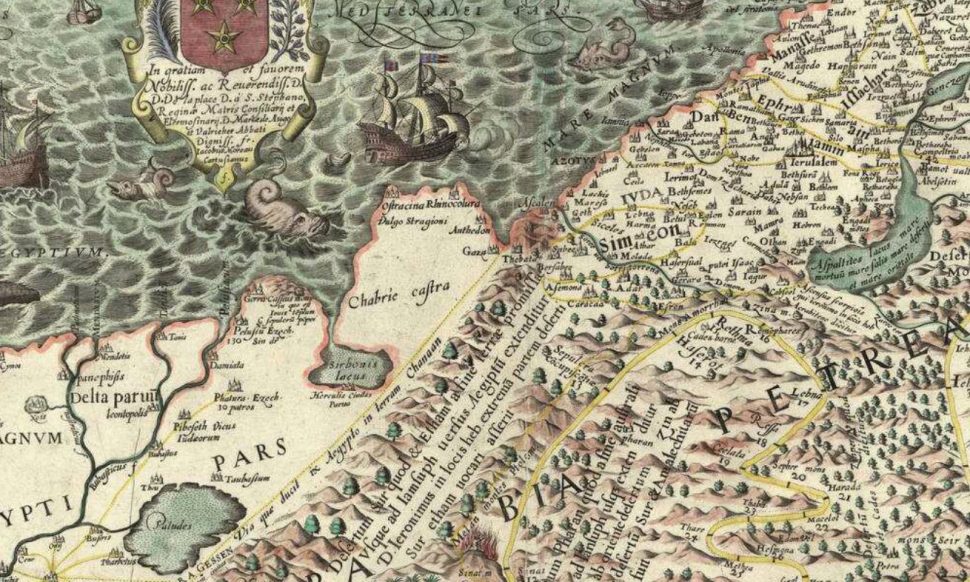
The Exodus is one of the most significant events in the history of the Israelites. It is the story of their escape from slavery in Egypt and their journey to the land of Canaan, which God had promised to them. The geography of the Exodus played a crucial role in shaping the experiences and beliefs of the Israelites. Here's a closer look at the journey from Egypt to Canaan.
- Egypt: The Exodus began in Egypt, where the Israelites had been living in slavery for over 400 years. According to the Bible, Moses led the Israelites out of Egypt and across the Red Sea, which God miraculously parted to allow them to pass.
- Sinai Peninsula: After crossing the Red Sea, the Israelites traveled through the Sinai Peninsula, a barren and desolate region that was difficult to navigate. It was at Mount Sinai that Moses received the Ten Commandments and established the covenant between God and the Israelites.
- Wilderness: The Israelites spent 40 years wandering in the wilderness, a harsh and unforgiving landscape that was marked by sand dunes, rocky terrain, and extreme temperatures. They relied on God's provision of manna and water to sustain them during their journey.
- Jordan River: The Israelites eventually arrived at the Jordan River, which they crossed into the land of Canaan, the promised land. The crossing of the Jordan River is seen as a symbol of the Israelites' transition from slavery to freedom.
- Canaan: The land of Canaan was a region that was rich in resources and had fertile soil, making it an ideal location for settlement. The Israelites faced many challenges as they established themselves in the land, including conflicts with other tribes and struggles to maintain their religious beliefs.
The geography of the Exodus provides us with a greater understanding of the challenges and triumphs of the Israelites as they journeyed from slavery in Egypt to freedom in the promised land. The landscape of the region played a significant role in shaping their experiences and beliefs, and continues to be an important part of their cultural and religious heritage.

Related Posts
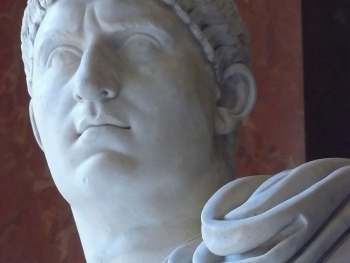
The Reign of Otho: A Brief Yet Impactful Chapter in Roman History
In the annals of ancient Rome, the name Otho stands as a reminder of the tumultuous nature of imperial politics... Read More
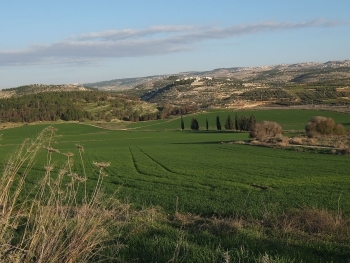
The Land of Milk and Honey: Understanding the Geography of Israel in the Bible
The land of Israel, also known as the Holy Land, has a rich history and plays a prominent role in... Read More

The Role of Geography in the Book of Revelation
The Book of Revelation is one of the most intriguing and controversial books in the Bible. It is a prophetic... Read More

The Exodus is one of the most significant events in the history of the Israelites. It is the story of... Read More
- Praise And Worship Flags
- Privacy Policy
- Terms of Service
Map Of Moses In The Wilderness
- by Admin Team
- June 13, 2022 March 24, 2024

The Map Of Moses In The Wilderness is a video production for the University of Texas at Austin’s Religious Studies program. It is based on my nearly 30 years of research about the Exodus, and explores the possibility that it represents an Egyptian record of the founding of Israel by one of Egypt’s Delta Princes, Aha.
The story of the 40 year wilderness journey in the Old Testament, where Moses led the children of Israel to the Promised Land, has always been a popular one: The traditional movie poster from 1956 is a great example. One of its most famous images, however, is not from this black and white promotional piece, nor is it typically biblical in any way. This image came directly from an engraving by William Blake, titled “Milton’s Paradise Lost” (1808). It depicts two large granite monoliths that were supposedly worshiped by “sun-worshipping Druids.” These structures are also believed to have been used for ritual sacrifice. This photograph and interpretation of these ancient stone structures have become known as “The Pillars of Moses”.
Right here on Churchgists, you are privy to a litany of relevant information on University of Findlay financial aid, University of Findlay athletic scholarships, University of Findlay admission requirements, and so much more. Take out time to visit our catalog for more information on similar topics.

I am an archaeologist and a travel addict. I spent the first five years of my professional career working on a dig in Israel, but after that, I decided to explore the world. When I started traveling, I was amazed by what I learned about ancient Israel. Map Of Moses In The Wilderness Moving from place to place was a big part of ancient Israel’s story. The Israelites took 40 years to travel a journey that would now take about 11 days (although my husband and I took three weeks). As a result, even for the modern traveler, understanding their location is crucial to understanding their story. See this map of Moses in the wilderness:
The first 20 years were spent escaping Egypt and crossing the Red Sea. These two events alone were enough to mark their lives forever. Despite all this, they still had another 22 years of wilderness wandering ahead! For example, Exodus 15-17 shows how they wandered in the desert before reaching a large oasis at Elim (Exodus 15:27). This oasis was good size because it had 12 wells and 70 palm trees (Exodus 15:27). They then went on to Marah (Exodus 15:23), where the water tasted bad. God showed Moses a tree that made the water sweet (Exodus 15:25). Next came Elim and Elim had 12 wells filled with water! This is not surprising as there are many springs in this area today providing more than enough resources for travelers.”
Moving from place to place was a big part of ancient Israel’s story.
The Israelites were on the move. A big part of their story was that they were moving from place to place. We know this because of the book of Numbers in which we learn that they spent 40 years wandering through the wilderness, and then another 42 stops at different places along their journey.
In addition to having an actual map of Moses’ route drawn out for us by God himself, we can use some other clues in Scripture to figure out where those locations might have been. For example, when Moses sent spies into Canaan prior to entering it himself with all his people, he sent them “to view” (Hebrew yare’) different parts of Canaanite territory—using a verb meaning “viewing things from afar”—and they came back with reports about each area’s strengths and weaknesses (Num 13:17). The most detailed account comes from two scouts who went eastward across Canaanite territory until they reached its eastern border at Mount Seir (Num 13:22–25).
The Israelites took 40 years to travel a journey that would now take about 11 days (although my husband and I took three weeks).
The Israelites took 40 years to travel a journey that would now take about 11 days (although my husband and I took three weeks). Moses led them, and God was their guide. God led the Israelites through the wilderness by way of two miraculous phenomena: a cloud and pillar of fire.
The Israelites were just as confused about their destination as we are today when it comes to our own journeys through life—what is this all about? What does God want from me? They had no idea where they were headed or what might happen once they got there; but like us, they simply trusted in God’s leading and followed His instructions for getting there safely.*
As a result, even for the modern traveler, understanding their location is crucial to understanding their story.
Understanding the locations of where they stopped is not just important to us because it helps us to understand their story. It’s also important because it gives us a more complete picture of what happened during those 40 years in the wilderness.
When you think about events like crossing through the Red Sea or God giving manna, it’s easy to imagine that these things must have happened in some remote part of Egypt. But when we look at a map, we learn that this wasn’t true at all! In fact, many of these places are still being used today by modern-day travelers and explorers. And while they may seem pretty nondescript from our vantage point now (what with Google Maps readily available), back then these locations were absolutely integral pieces in an epic journey across the Middle East.
The first 20 years were spent escaping Egypt and crossing the Red Sea.
The first 20 years of Moses’ life were spent in bondage. After Pharaoh had commanded that all male Israelites would be killed, and his family spared (because his mother hid him), Moses was raised by her as an Egyptian prince. However, he never forgot his heritage or the plight of his people and grew up to become a leader among them.
Next came 40 years of wandering in the wilderness before arriving at Mount Sinai. This journey took roughly ten years due to their slow advance through the desert and frequent lack of food or water sources along the way (as well as fighting off predators). Another 30 years—or approximately one generation—was spent at Mount Sinai after they arrived there before finally entering into Canaan, where they were allowed to settle down permanently at last!
These two events alone were enough to mark their lives forever.
- The Exodus: The Israelites have been slaves in Egypt for more than 400 years, but God hears their cries and delivers them from bondage by parting the Red Sea. This event is known as the “Exodus” (which means “going out”).
- Crossing of the Red Sea: The Israelites have been freed from slavery, but now they must escape pursuing Egyptian armies chasing them across the desert. As they cross into what appears to be a dead end and no escape route, God provides an opening in a mountain range that allows them to pass through safely without being killed or captured by pharaoh’s army. This event is known as crossing through “the” Red Sea or sometimes simply “Red” Sea (since there are multiple seas on this map).
Despite all this, they still had another 22 years of wilderness wandering ahead!
There were other boundaries as well. The Israelites had to go around Edom and Moab, Ammon and Bashan (Genesis 15:18-21) as well as the Dead Sea (Numbers 21:4). They had to travel through the mountains of Seir (Deuteronomy 2:1-8), which was part of the desert of Paran (Numbers 21:4). It was a long journey!
For example, Exodus 15-17 shows how they wandered in the desert before reaching a large oasis at Elim (Exodus 15:27).
For example, Exodus 15-17 shows how they wandered in the desert before reaching a large oasis at Elim (Exodus 15:27). The Israelites were led by Moses and lived in the wilderness for 40 years. They also lived in the desert for 20 years, but there is no exact location given. In other places it says they wandered through wildernesses or deserts (Numbers 33:16; Deuteronomy 2:1). If you count all of these events together, then this amounts to 22 years wandering around! In actuality it was probably closer to 12 years due to different activities taking place during that time.
We also have some insight into their life as nomads when we look at what happened at Mount Sinai where God gave His law to Moses on tablets of stone (Exodus 19-20). This happened after they had crossed over into Canaan territory so they must have been back out in open areas somewhere near Mount Horeb where God spoke with Moses initially about his mission from God.”
This oasis was good size because it had 12 wells and 70 palm trees (Exodus 15:27).
The oasis was a good size because it had 12 wells and 70 palm trees.
It was a large oasis and lush with palm trees, which is why the Israelites called it the Well of Miracles.
They then went on to Marah (Exodus 15:23), where the water tasted bad.
Marah is located in the southwestern part of Sinai, about 40 miles southeast of Mount Sinai. It is one of several places where God told Moses to strike a rock with his staff so that water would flow out (Ex. 17:6; Nm. 20:11). The water was bitter because it contained minerals and salts, but when the people complained to Moses, he prayed and God sweetened it (Ex. 15:23).
God showed Moses a tree that made the water sweet (Exodus 15:25).
The tree was a type of fig. The Bible says it was not a fig tree. It was not a sycamore, tamarisk or willow. Nor was it a palm tree. There is no evidence that the word used for this tree in the original Hebrew text has any connection with any of these trees.
I have seen all sorts of trees growing wild in Israel and Syria but I have never seen one like this description before!
It’s important to read about Israel’s travel through the wilderness in light of their location.
When we read about Israel’s travels in the wilderness, it’s important to have a clear understanding of the geography, climate and political situation of that region. We also need to understand their religious beliefs and culture as well as their history.
what did moses do in the wilderness for 40 years
God says, “ And I will bring the third part through the fire, and will refine them as silver is refined, and will try them as gold is tried ” (Zechariah 13:9).
This verse reminded me of the story of Moses. Before leading the Israelites out of Egypt, Moses, after killing an Egyptian, fled to the wilderness, where he shepherded sheep for forty years; God then called him to lead the Israelites out of Egypt (See Exodus 2:11-15). In the past, I didn’t know God’s intention, thinking: Since the Israelites were living under the control and slavery of the Egyptian Pharaoh, leading a miserable life, why did God not send Moses earlier to save the Israelites from suffering, but sent him into the wilderness and refined him for forty years? What was God’s will behind this? It wasn’t until I read this verse that I understood God’s intention. Because God wanted to make Moses fit for His use, He arranged that environment to refine and purify him. Before, Moses always relied on his hot blood and temperament to do things; seeing his compatriot being oppressed, he didn’t rely on God or look unto Him, but depended on his hot blood and stoned an Egyptian to death. How could he, a man full of naturalness, be fit for God’s use, and take on the responsibility of leading the Israelites out of Egypt? Thus, to rid him of his naturalness and make him capable of the mission, God had him endure refinement in the wilderness for forty years.
After 40 years, the naturalness of Moses, which was not fit for God’s use, was ground out of him; he truly saw God’s faithfulness, almightiness and sovereignty, and that nothing is impossible for God. Moses lived in the wilderness for neither several days nor a couple of years, but for as long as 40 years. Though we don’t know how he made it through those years, there is no doubt that God had always led and helped him. Through such trials and refinements, Moses saw the hand and deeds of God, and thus developed true faith in Him, and had the courage to accept the commission of God and face the powerful army of the Pharaoh.
From the story of Moses, I gained much enlightenment, and came to know that if we want to be perfected by God and be fit for His use, we have to undergo His trials and refinements to get rid of our naturalness and corrupt disposition. Only in difficult environments will we truly look unto God and rely on Him, see His wisdom and almightiness, and have true knowledge of Him.
Knowing God’s will, I came to realize that the ridicule, insult, and slander, as well as the arrest of the atheistic government that I had suffered, were elaborately arranged by God to purify and gain me. Having experienced these, I developed true faith in God, and had a true understanding of my problems, such as notions, corruption, and lack. I truly appreciated that the sufferings and refinements set by God were all my need, which contained His kind intention. I am so small, but so lucky to follow God and experience His work in this life, which is indeed God’s exceptional exaltation and grace for me.
how many miles did the israelites walk in the wilderness
Egypt and Canaan are separated by a total of 8482 kilometres (kilometres) and 583.09 metres in straight line distance. Egypt and Canaan are separated by a distance of 5270.8 miles measured in miles.
As a result, how long should have it took the Israelites to travel from Egypt to the Promised Land?
As a result of their unbelief, he punished them with forty years of desert wandering until the unbelieving generation died out without ever setting foot in the Promise Land. A total of 11 days should have been required for the actual journey. God’s chosen people were forced to flee to Egypt as a result of a seven-year famine in their homeland.
Also, how many miles did the Israelites have to journey from Egypt to the Promised Land before they could call it home?
Having walked in a single file line with three feet between them, the length of the line itself would have been more than six times as long as the entire distance travelled, or more than 1300 miles. They would have made it to the promised land if they had travelled one mile every day for nine months, as they had planned. Instead, it took forty years for them to complete the task.
How long did it take the Israelites to journey from Egypt to Canaan, taking all of above into consideration?
God ordered that the Israelites would wander in the desert for 40 years as a consequence of their refusal to accept the country that they had explored for 40 days. This corresponded to the 40 days that the spies spent touring the land.
How many days should it have taken the Israelites to reach the promised land, according to biblical estimates?
Remember that God’s original plan for Israel was for them to conquer the Promised Land in a matter of days, not years or decades. It took Israel 40 years to reach this point. I think that if you have faith, you can move mountains (including those related to completing your objectives for this year) in only 40 days. Consider the following 40 days to be a wilderness experience.
In the end, it is not so important to know exactly where each of these places was. What is more important is that we learn from the Israelites’ experiences and apply them to our lives today. It may take time, but understanding the location of Israel’s journey through the wilderness can give us valuable insight into their story!
Related posts:
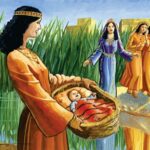
Join the conversation Cancel reply
Your email address will not be published. Required fields are marked *
Save my name, email, and website in this browser for the next time I comment.
Journeys from Egypt to Canaan
Download story: journeys from egypt to canaan.
Choose the file type and the file format:

Apple Keynote

Download Story Planner: Journeys from Egypt to Canaan
A free Story Planner PDF can be downloaded. It shows the images with a short description of what is happening in each scene. You can print this and add your own notes.
Choose your language:

- These maps are the copyright of Chris and Jenifer Taylor of The Bible Journey who have granted FreeBibleimages permission to distribute them using a Creative Commons Attribution-NonCommercial 4.0 International License .
- Individual maps can be used in educational presentations, web articles, blogs and social media with attribution to www.thebiblejourney.org .
- These images cannot be sold under any circumstances or used in any format for commercial gain.
- You cannot redistribute this set of maps online but you can create a link to the relevant page on www.thebiblejourney.org or FreeBibleimages.org to allow others to download these images under the same Terms of Download.
- These maps are not to be used in any context where the accompanying message is undermining of the Christian faith and gospel.

We are a team of Christians creating a visual journey through the Bible as a resource for teaching all ages – available for free download by anyone, anywhere at any time. FreeBibleimages is a UK registered charity (1150890).
Terms of image use
All images are free for you to use in teaching. Conditions on the reuse of the images are defined in the Terms of Download for any set. View our Frequently Asked Questions for more information.
News updates
View all our latest news and developments on the FreeBibleimages Project Update page.
Free newsletter
Be the first to know when new stories go online by signing up for our free newsletter. Our privacy policy explains how we guard your details.
E [email protected] W www.freebibleimages.org
If you are having trouble accessing or downloading files please explore our Help pages where you can find tips and tutorials. There are also videos to help you.

- Skip to main content
- Skip to header right navigation
- Skip to site footer

Casual English Bible
By Stephen M. Miller
Route of Exodus
Map egyptians catching quail.
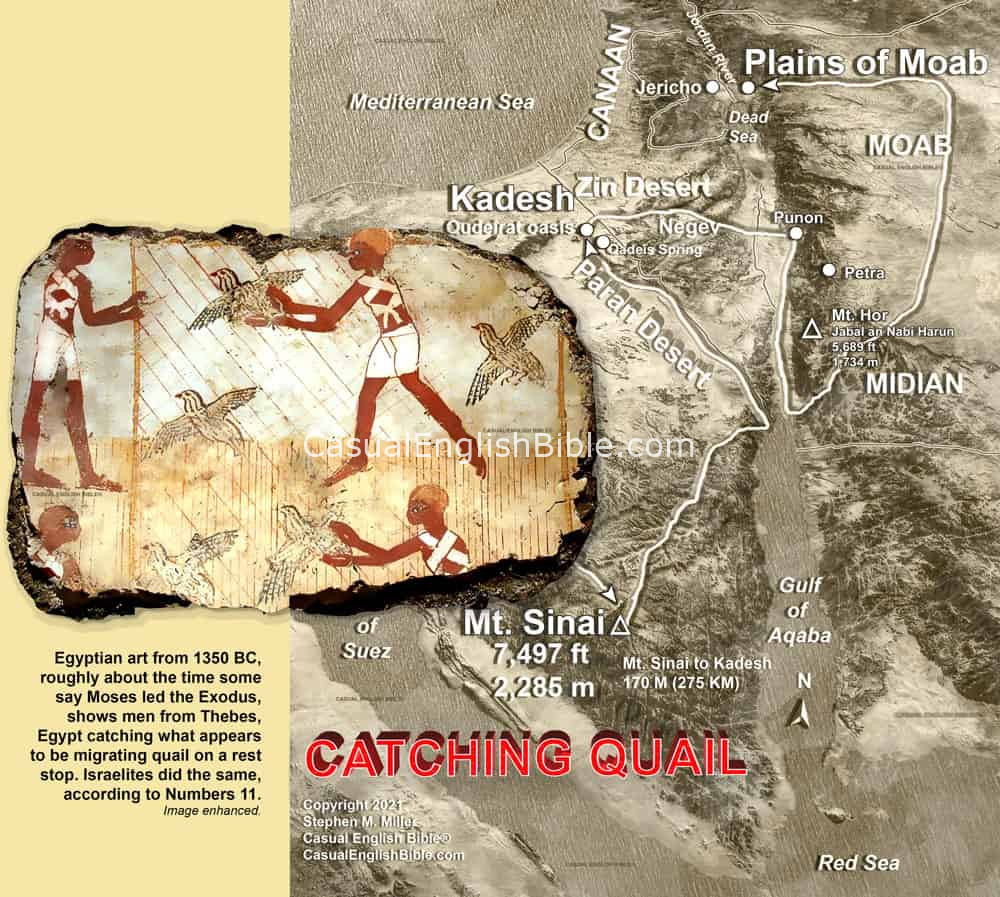
Road to the Promised Land
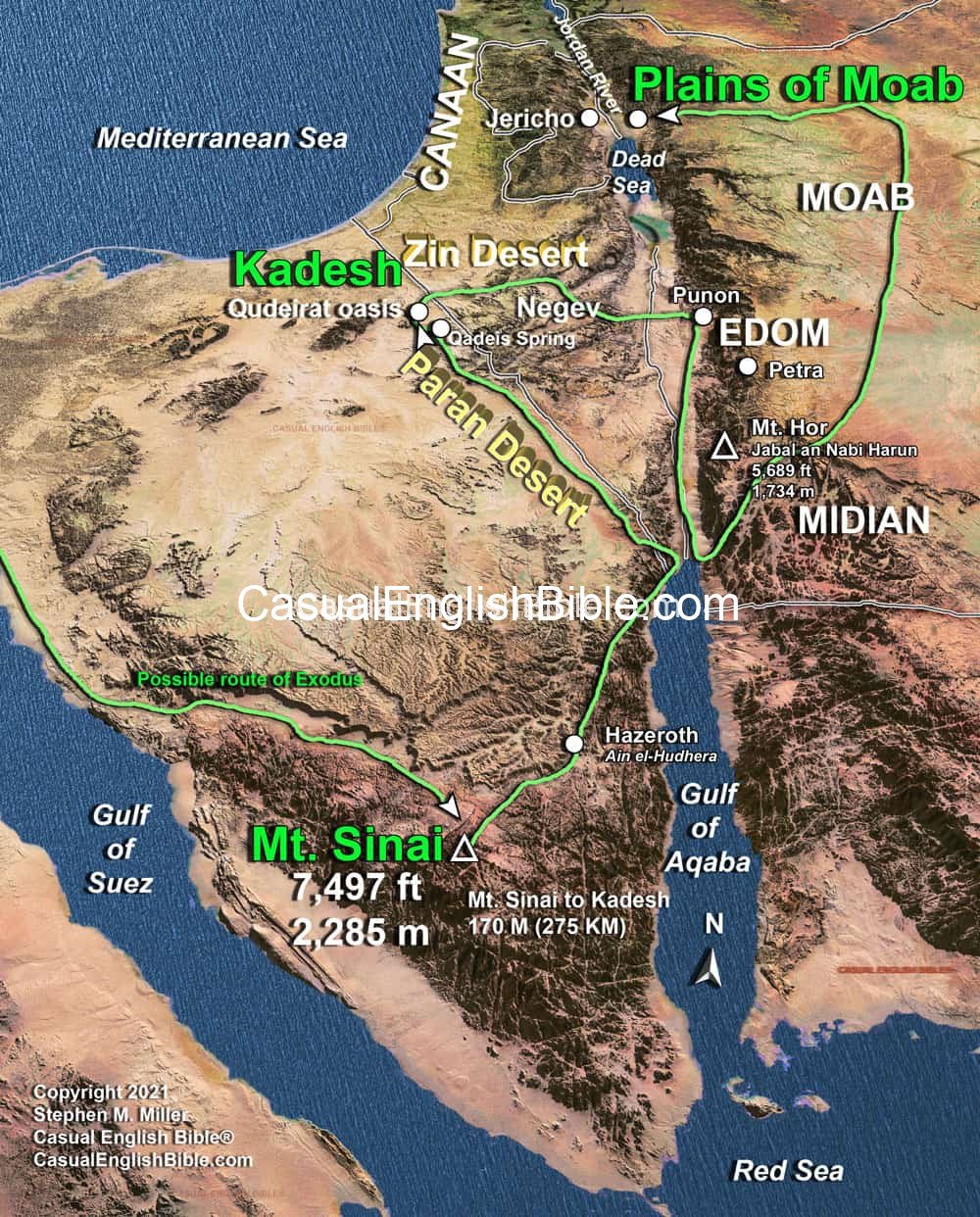
Israelite route to the Promised Land
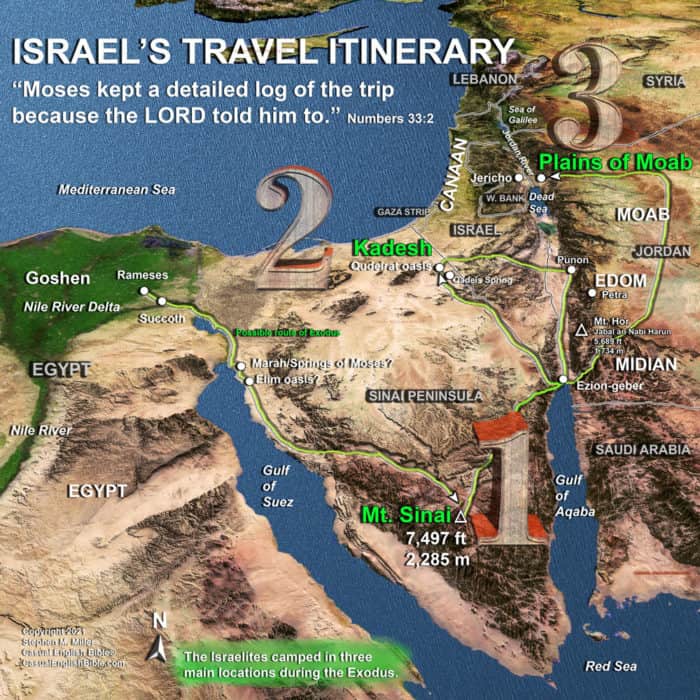
Route to Promised Land
Map of exodus: out of egypt to the promised land.
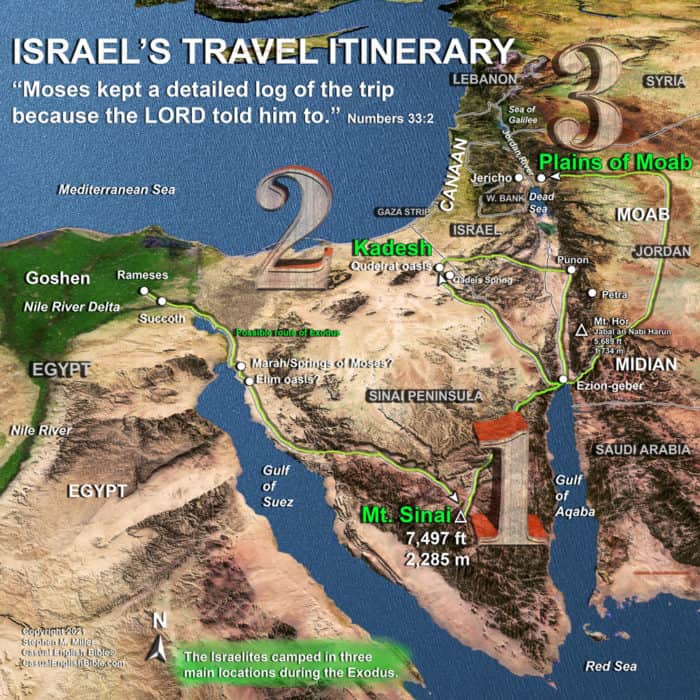
Out of Egypt to the Promised Land
Mount sinai, sinai, land of god, attack of desert nomads.
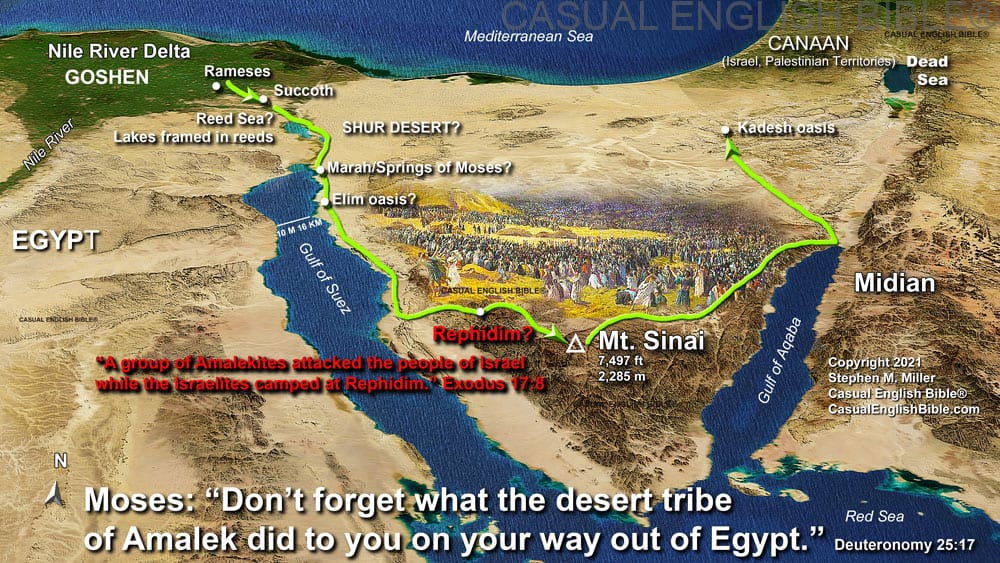
Goodbye Egypt
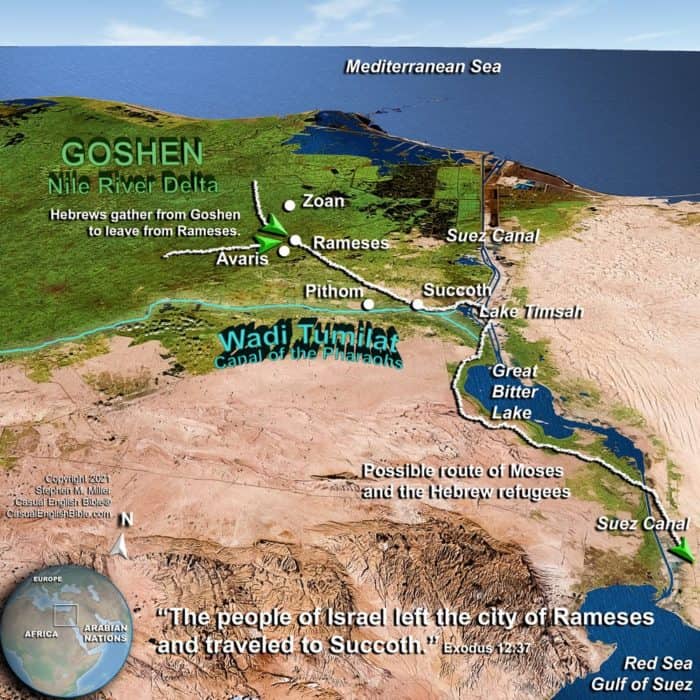
After crossing the sea
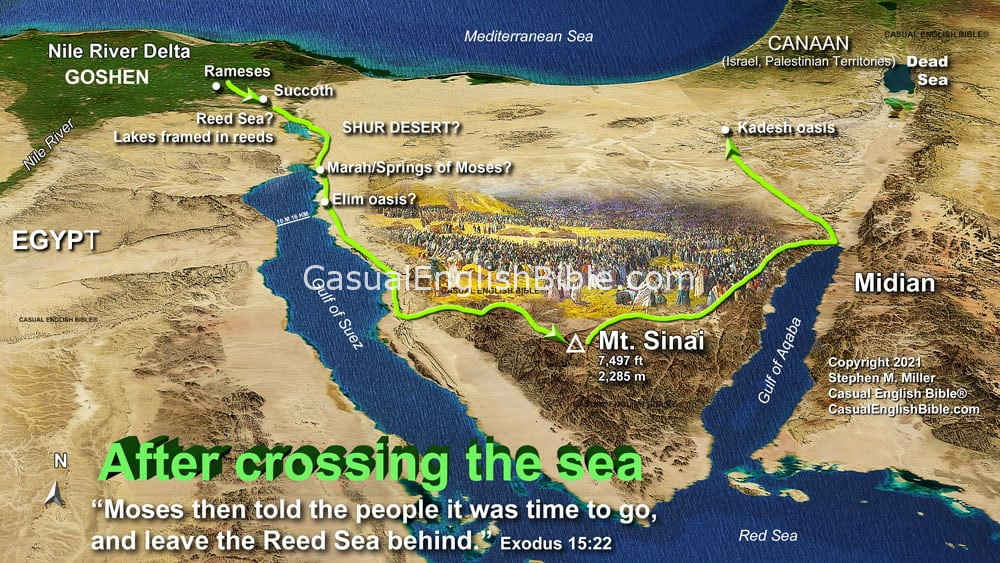
Exodus out of Egypt
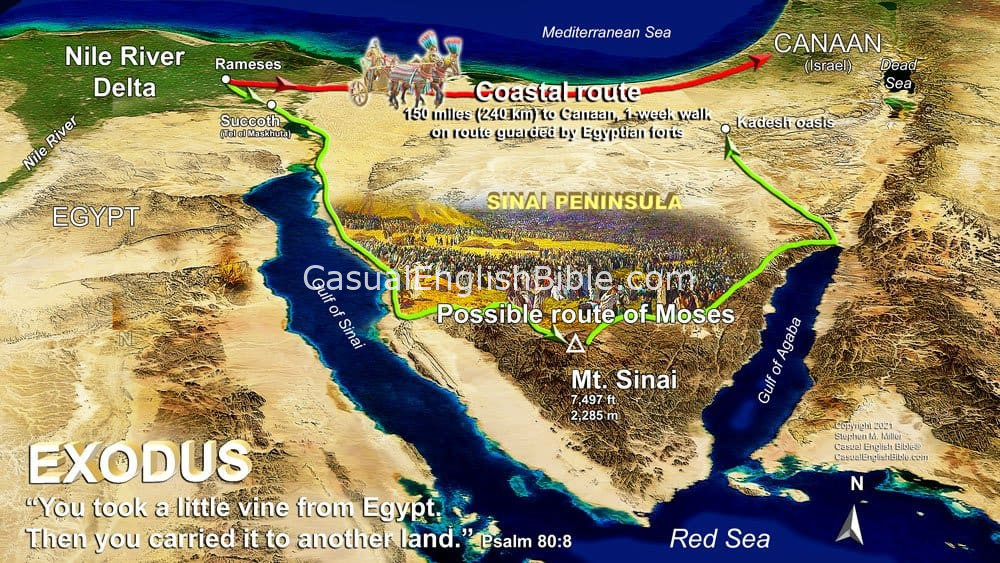
This website uses cookies to improve your experience. By continuing to use our site, you consent to our use of cookies.
> Privacy Policy
- Old Testament Leader Guide GNT
- New Testament Leader Guide GNT
- Breakthrough Bible NABRE Leader Guide
- The Catholic Youth Bible®, 4th Edition
- The Catholic Children's Bible
- Discover! Online Director's Manual
- Connect! Bringing Faith to Life
- Connect! Activity Book
- Connect! Catechist Guide Year 1
- Connect! Catechist Guide Year 2
- Connect! Catechist Guide Year 3
- Connect! Bringing Faith to Life Student Book
- Connect! Church History Student Book
- Connect! Teacher Guide Year 1 Part 1
- Connect! Teacher Guide Year 1 Part 2
- Connect Teacher Guide Year 2 Part 1
- Connect Teacher Guide Year 2 Part 2
- Connect Teacher Guide Year 3 Part 1
- Connect Teacher Guide Year 3 Part 2
- Revelation and the Old Testament
- Jesus Christ and the New Testament
- The Paschal Mystery and the Gospels
- The Church Foundations and Mission
- Sacraments and God's Grace
- Morality and God's Love
- Director's Manual, Gathered Sessions and Retreat
- Called to Mercy 2024
- Reconciliation and Eucharist Kit
- Online Director's Manual
- Reconciliation Teaching Guide
- Reconciliation Teaching Guide (Spanish)
- Eucharist Teaching Guide
- Eucharist Teaching Guide (Spanish)
- Confirmation Teaching Guide
- Confirmation Teaching Guide (Spanish)
- Reconciliation Home Guide
- Eucharist Home Guide
- Confirmation Home Guide
- Understanding Catholicism
- Creating Justice
- The Living Word
- Jesus Christ
- The Paschal Mystery
- The Sacraments
- Christian Morality
- The New Testament
- Catholic Social Teaching
- Church History
- Teacher Guide
- Catechist Guide
- Old Testament Teacher Guide
- New Testament Teacher Guide
- The Old Testament, the Trinity, and the Mission of Christ
- The New Testament, the Church, and the Sacraments
- Christian Morality and Prayer
- The Old Testament and the Trinity
- The Prophets, Jesus Christ, and the Holy Spirit
- The New Testament and the Church
- Liturgy and Sacraments
- Christian Morality and Social Justice
- Prayer and Church History
- Understanding Catholic Christianity
- Living Justice and Peace
- Anointed in the Spirit Middle School Catechist Guide
- Divorce and Beyond Spanish Edition
- The Catholic Church
- Growing in Christian Morality
- Creating a Christian Lifestyle
- Understanding Catholic Christianity (1996)
- Jesus of History, Christ of Faith
- Celebrating Sacraments
- Living Justice and Peace (2008)
- Written on Our Hearts
- World Religions (2015)
- Liturgical Calendar
- Feast Day Activities
- Stations of the Cross
- Marian Events
- Penance Services
- Catholic Culture
- In Class Prayer Services
- Learning to Pray
- Reflections
- Christology
- Ecclesiology
- Social Justice
- World Religions
- Youth Ministry
- Coloring and Crafts
- Crosswords and Word Activities
- Discussion-Oriented
- Skits and Dramas
- Other Activities
- Classroom Management
- Review Exercises
- Quiz and Essay Questions
- Posters and Charts
- PowerPoints
- Recommended Websites
Home > Media > Images
Map of the Israelite Journey: Out of the Wilderness, Into the Promised Land
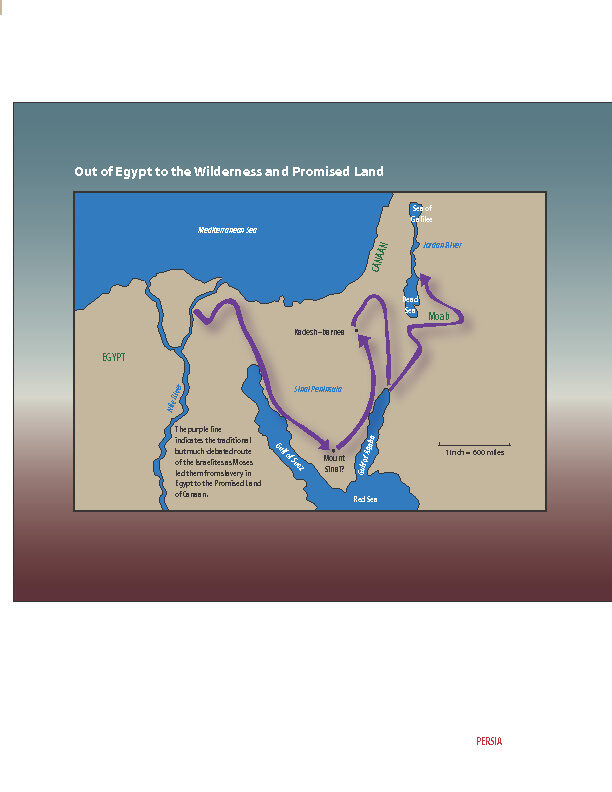
About this image
Copyright © Saint Mary's Press. This image may be saved, printed or downloaded for personal and educational (non-commercial) use. All other uses require written permission from the publisher.
Related Text
- Map of 'Out of Egypt to the Wilderness and Promised Land'
- Paul's Journeys - PowerPoint
- Map of The Founders Journeys
- The Life of Moses: A Chronology
- Chapter 2 Activity: A Salvation History Time Line
- Map of the Exile and Back Home
- Empires of the Ancient Near East
Related Images
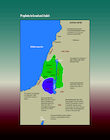
Map of the Prophets to Israel and Judah

Map of the Journeys of Abraham, Jacob and Joseph - The Founders

Map of the Exile to Babylon and Back to Jerusalem
- Bible Grant Program
- Rights & Permissions
- Submissions
- Privacy Policy
- DEI Statement
- High School
- Middle School
- All Products
- Order History
- Return Policy
- Parish Online Catalog
- K-8 Online Catalog
- High School Catalog
Ministry Care Team
- 800-533-8095
- International Distributors
Copyright © 2024 Saint Mary's Press. All rights reserved. • Privacy Policy
One blog, countless inspirations
Head to our blog to learn how to more effectively touch hearts and change lives through stories, saints, and scripture.
Take a Look
You are using an outdated browser. Upgrade your browser today or install Google Chrome Frame to better experience this site.
- Bible Studies
- New/Special
- Encouragement
- Christian Symbols
- Scholarly Articles
- Way of the Cross
- Thanksgiving
- St. Patrick's Day
- New Year's Day
- Steps to Peace with God
- Articles/Stories
Beginning the Journey (for new Christians) . en Español
Old Testament Abraham Jacob Moses Joshua Gideon David, Life of Elijah Psalms Solomon Songs of Ascent (Ps 120-135) Isaiah Advent/Messianic Scriptures Daniel Rebuild & Renew: Post-Exilic Books
Gospels Christmas Incarnation (Mt, Lk) Sermon on the Mount (Mt 5-7) Mark Luke's Gospel John's Gospel 7 Last Words of Christ Parables Jesus and the Kingdom Resurrection
Acts The Early Church (Acts 1-12) Apostle Paul (Acts 12-28)
Paul's Epistles Christ Powered Life (Rom 5-8) 1 Corinthians 2 Corinthians Galatians Ephesians Vision for Church (Eph) Philippians Colossians, Philemon 1 & 2 Thessalonians 1 & 2 Timothy, Titus
General Epistles Hebrews James 1 Peter 2 Peter, Jude 1, 2, and 3 John
Revelation Revelation Conquering Lamb of Revelation
Topical Glorious Kingdom, The Grace Great Prayers Holy Spirit, Disciple's Guide Lamb of God Listening for God's Voice Lord's Supper Names of God Names of Jesus Christian Art
- Graphics and Maps of the Exodus and Tabernacle
- Genealogy of Moses
- Tabernacle Complex Diagram
- Tabernacle Diagram
- Tabernacle Flow of Worship
- Moses' Trip from Egypt to Midian topo | white
- Rameses and Pithom topo | white
- Route across the Red Sea ("Reed Sea") topo | white
- Traditional Route of the Exodus topo | white
- Conquest of the Transjordan topo | white
- Shittim and Baal-Peor topo | white
- Paintings of Moses and the Exodus, featuring James J. Tissot
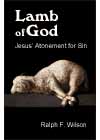
You can purchase one of Dr. Wilson's complete Bible studies in PDF, Kindle, or paperback format -- currently 48 books in the JesusWalk Bible Study Series.
Old Testament
- Abraham, Faith of
- Jacob, Life of
- Moses the Reluctant Leader
- David, Life of
- Songs of Ascent (Psalms 120-134)
- 28 Advent Scriptures (Messianic)
- Rebuild & Renew: Post-Exilic Books
- Christmas Incarnation (Mt, Lk)
- Sermon on the Mount (Mt 5-7)
- Luke's Gospel
- John's Gospel
- Seven Last Words of Christ
- Jesus and the Kingdom of God
- Resurrection and Easter Faith
- Early Church (Acts 1-12 )
- Apostle Paul (Acts 11-28)
Pauline Epistles
- Romans 5-8 (Christ-Powered Life)
- 1 Corinthians
- 2 Corinthians
- Philippians
- Colossians, Philemon
- 1 & 2 Thessalonians
- 1 &2 Timothy, Titus
General Epistles
- 1 & 2 Peter, Jude
- 1, 2, and 3 John
- Conquering Lamb of Revelation
- Glorious Kingdom, The
- Grace: Favor for the Undeserving
- Great Prayers of the Bible
- Holy Spirit, Disciple's Guide
- JesusWalk: Beginning the Journey
- Lamb of God
- Listening for God's Voice
- Lord's Supper: Disciple's Guide
- Names and Titles of God
- Names and Titles of Jesus
From Exodus to the Promised Land: Tracing Israel’s Journey with Bible Maps
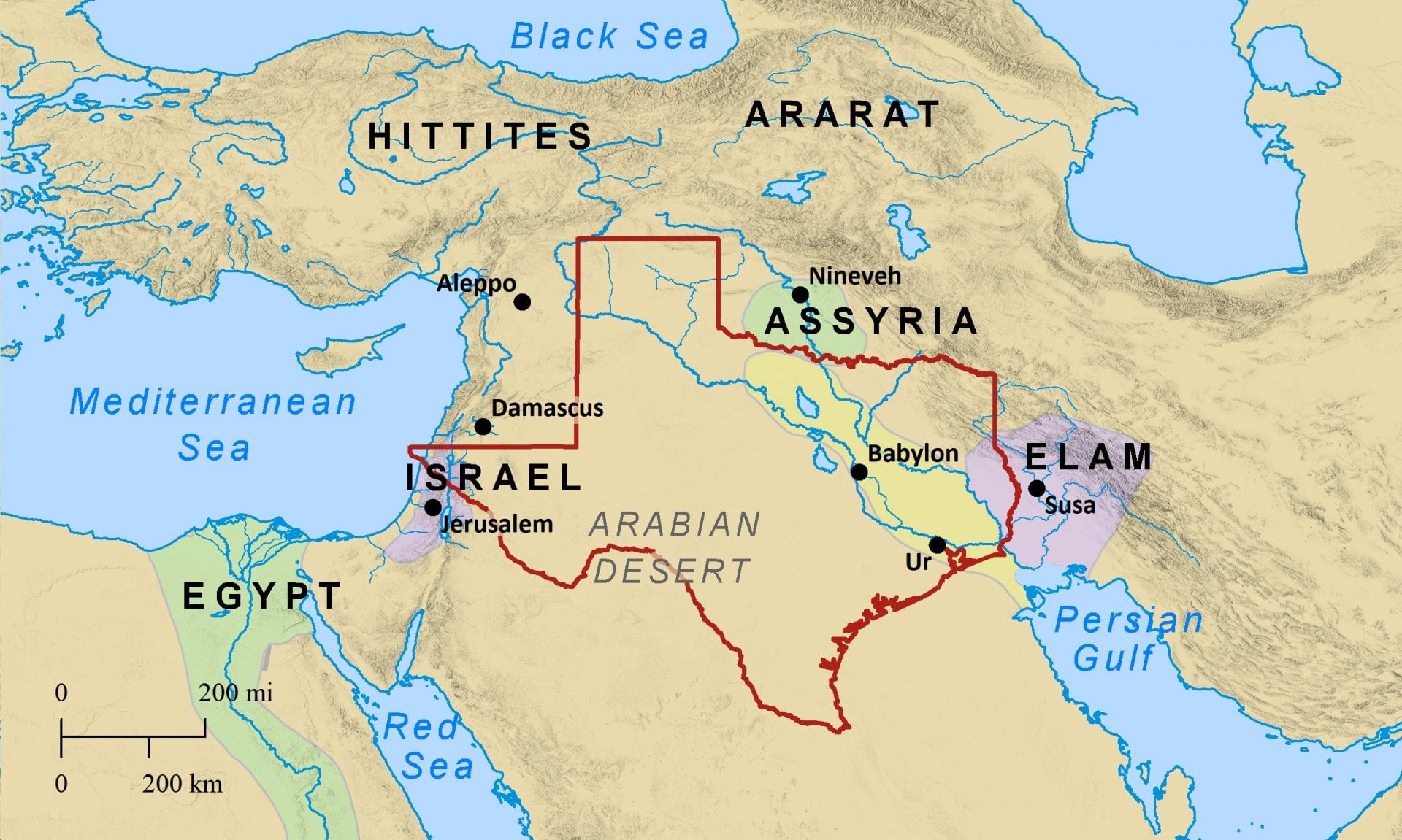
The journey of the Israelites from slavery in Egypt to the Promised Land is one of the most iconic narratives in the Bible. It's a story of liberation, faith, and endurance that has captivated hearts for generations. Now, with the aid of Bible maps, we can vividly trace the steps of this epic journey, gaining a deeper appreciation for the challenges and triumphs that defined this pivotal moment in history.
Mapping the Exodus
The story of the Exodus begins with the Israelites' escape from Egyptian bondage. Bible maps provide a visual representation of their route, highlighting key locations such as the crossing of the Red Sea and their time in the wilderness. By following their path on the map, we can better understand the distances they covered and the obstacles they faced.
The Wilderness Experience
The Israelites' journey through the wilderness was a test of their faith and resilience. Bible maps allow us to explore the terrain they traversed, from the arid deserts to the oasis-like resting places. These maps help us appreciate the challenges of sustaining a large community in such harsh conditions and offer insights into the lessons learned during this period of wandering.
Following Moses' Leadership
Moses' leadership was instrumental in guiding the Israelites. Bible maps help us visualize his interactions with God on Mount Sinai and the various locations where he delivered crucial teachings and instructions. This visual journey enhances our understanding of Moses' role as both a spiritual leader and a practical guide for the nation.

The Entry into the Promised Land
The culmination of the Exodus story is the Israelites' entry into the Promised Land. With Bible maps, we can trace the final stages of their journey, including the crossing of the Jordan River and the conquest of Jericho. These maps allow us to witness the fulfillment of God's promise to lead the Israelites to a land flowing with milk and honey.
Contextualizing the Journey
Bible maps provide valuable historical and geographical context to the Exodus narrative. They show us the locations of significant events, the topography of the land, and the distances covered. This context enhances our appreciation of the magnitude of the Israelites' journey and the divine guidance that accompanied them.
Lessons of Faith and Endurance
Tracing the Israelites' journey with Bible maps offers more than just a visual representation of historical events. It's an opportunity to internalize the lessons of faith, perseverance, and trust in God that this story imparts. As we follow their footsteps on the map, we're reminded of the importance of leaning on faith during times of uncertainty.
Bible maps take us on a captivating journey through the Exodus narrative, allowing us to walk in the footsteps of the Israelites as they ventured from captivity to the Promised Land. These maps provide a window into their challenges, triumphs, and encounters with the divine. By exploring this journey through the lens of Bible maps, we gain a deeper understanding of the significance of their story and the enduring lessons it holds for our own faith journeys.
Related Posts

The Iconic Julius Caesar Statue in Rome: A Symbol of Power
Standing as a testament to one of history's most influential figures, the Julius Caesar statue in Rome serves as a... Read More

Visualizing Faith: Fostering a Deeper Connection with God’s Word Through Maps
The Word of God is a tapestry of stories, teachings, and truths that have shaped the lives of countless individuals... Read More

From Creation to Revelation: Tracing the Entire Bible Journey with Maps
The Bible is a remarkable journey through time, culture, and faith – a narrative that spans from the creation of... Read More
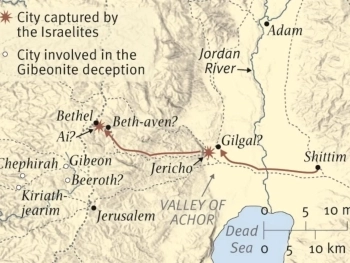
Beyond the Sunday School: Integrating Bible Maps into Church Programs
Churches are not just places of worship; they are hubs of learning, community, and spiritual growth. When it comes to... Read More

- Christian Books & Bibles
- Bible Study & Reference

Enjoy fast, free delivery, exclusive deals, and award-winning movies & TV shows with Prime Try Prime and start saving today with fast, free delivery
Amazon Prime includes:
Fast, FREE Delivery is available to Prime members. To join, select "Try Amazon Prime and start saving today with Fast, FREE Delivery" below the Add to Cart button.
- Cardmembers earn 5% Back at Amazon.com with a Prime Credit Card.
- Unlimited Free Two-Day Delivery
- Streaming of thousands of movies and TV shows with limited ads on Prime Video.
- A Kindle book to borrow for free each month - with no due dates
- Listen to over 2 million songs and hundreds of playlists
- Unlimited photo storage with anywhere access
Important: Your credit card will NOT be charged when you start your free trial or if you cancel during the trial period. If you're happy with Amazon Prime, do nothing. At the end of the free trial, your membership will automatically upgrade to a monthly membership.
Buy new: $10.99
Return this item for free.
Free returns are available for the shipping address you chose. You can return the item for any reason in new and unused condition: no shipping charges
- Go to your orders and start the return
- Select the return method

Download the free Kindle app and start reading Kindle books instantly on your smartphone, tablet, or computer - no Kindle device required .
Read instantly on your browser with Kindle for Web.
Using your mobile phone camera - scan the code below and download the Kindle app.

Image Unavailable

- To view this video download Flash Player
Follow the author

Map of the Exodus and Wilderness Journey: The 42 Camp Sites Organized and Illustrated for the First Time in History (History Of Redemption) Map – Folded Map, April 10, 2010
Purchase options and add-ons.
- Language English
- Publisher Periplus Editions
- Publication date April 10, 2010
- Dimensions 7.5 x 0.4 x 10.75 inches
- ISBN-10 079460644X
- ISBN-13 978-0794606442
- See all details

Frequently bought together

Similar items that may ship from close to you

Editorial Reviews
From the inside flap, about the author.
- Born in Sariwon, Korea
- B.A. in Corporate Management from Kookmin University, Korea
- M. Div. from the Presbyterian General Assembly Theological University, Korea
- Honorary D. Min. from Lael College and Graduate School, USA
- Honorary D.D. from Faith Theological Seminary, USA
- Honorary D.D. from Knox Theological Seminary, USA
- Former Moderator of the Hap-dong Conservative General Assembly of the Presbyterian Church in Korea
Product details
- Publisher : Periplus Editions; Fol Map edition (April 10, 2010)
- Language : English
- ISBN-10 : 079460644X
- ISBN-13 : 978-0794606442
- Item Weight : 3.99 ounces
- Dimensions : 7.5 x 0.4 x 10.75 inches
- #65 in Christian Bible Atlases (Books)
- #714 in Christian Historical Theology (Books)
- #1,566 in Old Testament Bible Study (Books)
About the author
Abraham park.
Rev. Abraham Park, D.Min., D.D., holds degrees from the Presbyterian General Assembly Theological University (B.A.) and from the Seminary (M.Div.), as well as honorary doctorate degrees from several institutions including Faith Theological Seminary and Lael College and Graduate School. He is the former moderator of the General Assembly of the Presbyterian Church in Korea. The congregation at which he ministers in Korea, Pyung Kang Che-il Church, numbers over 65,000 members.
Customer reviews
Customer Reviews, including Product Star Ratings help customers to learn more about the product and decide whether it is the right product for them.
To calculate the overall star rating and percentage breakdown by star, we don’t use a simple average. Instead, our system considers things like how recent a review is and if the reviewer bought the item on Amazon. It also analyzed reviews to verify trustworthiness.
- Sort reviews by Top reviews Most recent Top reviews
Top reviews from the United States
There was a problem filtering reviews right now. please try again later..
- Amazon Newsletter
- About Amazon
- Accessibility
- Sustainability
- Press Center
- Investor Relations
- Amazon Devices
- Amazon Science
- Sell on Amazon
- Sell apps on Amazon
- Supply to Amazon
- Protect & Build Your Brand
- Become an Affiliate
- Become a Delivery Driver
- Start a Package Delivery Business
- Advertise Your Products
- Self-Publish with Us
- Become an Amazon Hub Partner
- › See More Ways to Make Money
- Amazon Visa
- Amazon Store Card
- Amazon Secured Card
- Amazon Business Card
- Shop with Points
- Credit Card Marketplace
- Reload Your Balance
- Amazon Currency Converter
- Your Account
- Your Orders
- Shipping Rates & Policies
- Amazon Prime
- Returns & Replacements
- Manage Your Content and Devices
- Recalls and Product Safety Alerts
- Conditions of Use
- Privacy Notice
- Consumer Health Data Privacy Disclosure
- Your Ads Privacy Choices
Flow of Old Testament History Map
Creation of man #1 - 3969 b.c..
Archbishop Usher (1581 - 1656 A.D.), in his well-known Old Testament chronology, places Adam and Eve's creation at 4004 B.C. Dates vary, however, among Christians and Bible scholars regarding the year when the first humans were made.
One Jewish tradition, based on the Biblical calendar, places the creation of man on Friday, September 26 in 3760 B.C. (Julian). Bible Study's research, from which these map notes are based, assumes man was created in 3969.
The Great Flood #2 - 2313 B.C.
The steadily worsening spiritual state of man causes God to eradicate all humans from earth and start over with eight individuals saved inside a large ship (Genesis 6 - 8). More than three billion humans lose their lives in the global floodwaters.
After 371 days in the Ark (at this time all months had 30 days, see Genesis 7:11, 24, 8:4), God commanded Noah to leave it as it rested on "the mountains of Ararat" (Genesis 8:4). In modern times, this area is located in eastern Turkey near the country's border with Iran. The highest peak in this mountainous region is Mt. Ararat at 16,854 feet (5,137 meters).

The Tower of Babel #3 - c. 2233 B.C.
Instead of filling and repopulating the earth after the flood (Genesis 9:1), man decides to migrate and concentrate his population in the land of Shinar (Babylonia). Humans foolishly, in the new city they create, begin to build a huge tower as a way of surviving another possible worldwide flooding event.
God's response to the massive building project is to change man's single language (Genesis 11:1) into many. Humans, unable to communicate with each other, stop work on the tower and finally begin to scatter as was intended.
Abraham (Abram) Is Born #4 - 1960 B.C.
Some of the descendants of Shem (Noah's son) settle in Ur of the Chaldees (Genesis 11:28). Terah, the eighth generation of Shem produced after the flood, is living in Ur when he produces sons Haran (the oldest), Nahor and Abram (Abraham, the youngest son). Abram is born in 1960 B.C. when his father is 130 years old!
Abraham Leaves Home #5 - 1890 to 1885 B.C.
Haran, when his youngest brother Abram (Abraham) is 70 years old, dies (Genesis 11:27 - 31). His death is the catalyst for Terah to take most of the family (Abram, Sarah, Haran's son Lot) out of Ur to a place called Haran (located in modern Turkey). Terah lives another five years and dies at the ripe old age of 205.
God, in 1885, calls Abram and commands him to journey to the land of Canaan, a place he is promised as an eternal inheritance (Genesis 12:1, Hebrews 11:8 - 10).
Israel Migrates to Egypt #6 - 1670 B.C.
Abraham, son Isaac, and grandson Jacob (later Israel) sojourn in the land of Canaan. Abraham lives to the age of 175 while Isaac dies at 180. Jacob (later renamed Israel), born in 1800, produces twelve sons during his lifetime who will become the patriarchs of the tribes of Israel.
Jacob's eleventh son, Joseph, is his most beloved child (Genesis 37:3). His other sons, however, sensing his favoritism, resent Joseph. They decide to sell him, when he is roughly seventeen years old, to merchants traveling to Egypt (Genesis 37). Years later, after Joseph rises to power in Egypt, a severe famine comes upon the earth (41:46 - 57). The grinding global famine motivates Jacob to take his family to Egypt in 1670 (Genesis 45:28, 46:1 - 27).
The Exodus #7 - 1445 B.C.
God, after allowing the Israelites to spend many years as Egyptian slaves, decides the time is right to set them free. He accomplishes this goal through ten Old Testament plagues performed by Moses and Aaron (Exodus 2 - 15). The Israelites, after leaving Egypt in 1445, journey to Mount Sinai where they receive the Ten Commandments (and other laws) directly from God (Exodus 20 - 23, etc.).
Entering the Promised Land #8 - 1405 B.C.
Joshua, after the Israelites wander the wilderness 40 years because of their sins (Deuteronomy 1), leads God's people into the Promised Land.
Periodically, from the time of Joshua to Saul, the first human king, the Israelites are saved from their enemies by God-inspired people known as Judges. Notable Judges include Deborah and Barak, Gideon, Jephthah, Samson and Samuel.
Kingdom of Israel Conquered #9 - 723 B.C.
A united Israel is ruled by human kings from 1050 to 930 B.C. After the death of Solomon, the kingdom splits into two pieces, the Kingdom of Israel (northern ten tribes) and the Kingdom of Judah.
God allows the Kingdom of Israel, after years of refusing to repent of their sins, to be conquered by a foreign power. In 723 Assyrian King Shalmaneser V conquers Israel's capital city of Samaria and takes the vast majority of the people to Assyria as prisoners (2Kings 17).
Kingdom of Judah Conquered #10 - 605 to 586 B.C.
God allows the Kingdom of Judah, after refusing to repent of her sins, to be attacked by Babylonian King Nebuchadnezzar. The king attacks Judah and its capital city of Jerusalem in 605 and 597 (2Kings 24 - 25). Many Jews are taken out of the land as prisoners.
Nebuchadnezzar, in 586, battles Jerusalem for the third and final time. He destroys the city and burns Jerusalem's temple to the ground. Most of the remaining people in the land are taken captive.
Jews Go To Jerusalem #11 - 539 B.C.
The Babylonian empire is conquered by the Persians in 539 B.C. Persian King Cyrus, in the same year, allows Old Testament Jewish captives to go back to Judah and rebuild Jerusalem's temple (Ezra 1). In 516 - 515 work on rebuilding the temple is completed.
Flow of New Testament History
References Appointed Times of Jesus the Messiah Holy Bible, a Faithful Version, page 57 Life and Epistles of Paul Mysterious Numbers of the Hebrew Kings

- All Bible Maps
- Heart Messages
- Roman Roads
- Archaeology
Israel During Joshua's Time
( Enlarge ) ( PDF for Print ) (Freely Distributed)
Map of Israel During the Time of Joshua
The land of Israel during the time of Joshua. The twelve tribes are listed separately. Joshua proved to be an excellent general by his victory over the Amalekites (Exodus 17:9, 13). After Moses' death, according to the Book of Joshua, Joshua led the Israelites in their conquest of the highlands of central Palestine and during the distribution of the land among the twelve tribes, from the crossing of the Jordan River (Joshua 3) and the fall of Jericho (Joshua 6) to the renewal of the covenant at Shechem (Joshua 24).
It took about 6 years for the tribes of Israel to conquer the Land of Canaan and to overcome the military might of the ancient Canaanites according to Joshua 14. It was at this time that Joshua divided the land among the tribes and allotted portions according to the Word of the Lord, the size of the tribe, and by casting lots.
Joshua also revealed that each individual tribe was responsible to subjugate their portion of land and remove the defeated people. Many of the tribes failed in this responsibility. The land of Israel was divided and the above map shows each area that the tribes settled in, the larger tribes received more land.
Deuteronomy 7:1 - When the LORD thy God shall bring thee into the land whither thou goest to possess it, and hath cast out many nations before thee, the Hittites, and the Girgashites, and the Amorites , and the Canaanites, and the Perizzites, and the Hivites, and the Jebusites, seven nations greater and mightier than thou;
Joshua 14:7-10 - "I was Forty years old when Moses the servant of the LORD sent me from Kadeshbarnea to spy out the land; and I brought him word again as it was in mine heart. Nevertheless my brethren that went up with me made the heart of the people melt: but I wholly followed the LORD my God. And Moses swore on that day, saying, Surely the land whereon thy feet have trodden shall be thine inheritance, and thy children's for ever, because thou hast wholly followed the LORD my God. And now, behold, the LORD hath kept me alive, as he said, these forty and five years, even since the LORD spake this word unto Moses, while the children of Israel wandered in the wilderness: and now, lo, I am this day fourscore and five years old."
The Canaanites in the Smith's Bible Dictionary
Canaanites, The a word used in two senses: 1. A tribe which inhabited a particular locality of the land west of the Jordan before the conquest; and 2. The people who inhabited generally the whole of that country. 1. In Ge 10:18-20 the seats of the Canaanite tribe are given as on the seashore and in the Jordan valley; comp. Jos 11:3 2. Applied as a general name to the non-Israelite inhabitants of the land, as we have already seen was the case with "Canaan." Instances of this are, Ge 12:6; Nu 21:3 The Canaanites were descendants of Canaan. Their language was very similar to the Hebrew. The Canaanites were probably given to commerce; and thus the name became probably in later times an occasional synonym for a merchant. Full Article
Joshua from Smith's Bible Dictionary Joshua (saviour, or whose help is Jehovah). His name appears in the various forms of HOSHEA, OSHEA, JEHOSHUA, JESHUA and JESUS. 1. The son of Nun, of the tribe of Ephraim. 1Ch 7:27 (B.C. 1530-1420.) He was nearly forty years old when he shared in the hurried triumph of the exodus. He is mentioned first in connection with the fight against Amalek at Rephidim, when he was chosen by Moses to lead the Israelites. Ex 17:9 Soon afterward he was one of the twelve chiefs who were sent, Nu 13:17 to explore the land of Canaan, and one of the two, ch. Nu 14:6 who gave an encouraging report of their journey. Moses, shortly before his death, was directed, Nu 27:18 to invest Joshua with authority over the people. God himself gave Joshua a charge by the mouth of the dying lawgiver. De 31:14,23 Under the direction of God again renewed, Jos 1:1 Joshua assumed the command of the people at Shittim, sent spies into Jericho, crossed the Jordan, fortified a camp at Gilgal, circumcised the people, kept the passover, and was visited by the Captain of the Lord's host. A miracle made the fall of Jericho more terrible to the Canaanites. In the great battle of Beth-horon the Amorites were signally routed, and the south country was open to the Israelites. Joshua returned to the camp at Gilgal, master of half of Palestine. He defeated the Canaanites under Jabin king of Hazor. In six years, six tribes, with thirty-one petty chiefs, were conquered. Joshua, now stricken in years, proceeded to make the division of the conquered land. Timnath-serah in Mount Ephraim was assigned as Joshua's peculiar inheritance. After an interval of rest, Joshua convoked an assembly from all Israel. He delivered two solemn addresses, recorded in Jos 23:24 He died at the age of 110 years, and was buried in his own city, Timnath-serah. Full Article
The Bible Mentions "Inheritance" in many places:
Joshua 13:23 - And the border of the children of Reuben was Jordan, and the border [thereof]. This [was] the inheritance of the children of Reuben after their families, the cities and the villages thereof. 2 Chronicles 10:16 - And when all Israel [saw] that the king would not hearken unto them, the people answered the king, saying, What portion have we in David? and [we have] none inheritance in the son of Jesse: every man to your tents, O Israel: [and] now, David, see to thine own house. So all Israel went to their tents. 1 Kings 12:16 - So when all Israel saw that the king hearkened not unto them, the people answered the king, saying, What portion have we in David? neither [have we] inheritance in the son of Jesse: to your tents, O Israel: now see to thine own house, David. So Israel departed unto their tents. Deuteronomy 25:19 - Therefore it shall be, when the LORD thy God hath given thee rest from all thine enemies round about, in the land which the LORD thy God giveth thee [for] an inheritance to possess it, [that] thou shalt blot out the remembrance of Amalek from under heaven; thou shalt not forget [it]. Ezekiel 45:1 - Moreover, when ye shall divide by lot the land for inheritance , ye shall offer an oblation unto the LORD, an holy portion of the land: the length [shall be] the length of five and twenty thousand [reeds], and the breadth [shall be] ten thousand. This [shall be] holy in all the borders thereof round about. Numbers 35:8 - And the cities which ye shall give [shall be] of the possession of the children of Israel: from [them that have] many ye shall give many; but from [them that have] few ye shall give few: every one shall give of his cities unto the Levites according to his inheritance which he inheriteth. 2 Chronicles 6:27 - Then hear thou from heaven, and forgive the sin of thy servants, and of thy people Israel, when thou hast taught them the good way, wherein they should walk; and send rain upon thy land, which thou hast given unto thy people for an inheritance . Numbers 26:62 - And those that were numbered of them were twenty and three thousand, all males from a month old and upward: for they were not numbered among the children of Israel, because there was no inheritance given them among the children of Israel. Joshua 13:29 - And Moses gave [ inheritance ] unto the half tribe of Manasseh: and [this] was [the possession] of the half tribe of the children of Manasseh by their families. Joshua 24:32 - And the bones of Joseph, which the children of Israel brought up out of Egypt, buried they in Shechem, in a parcel of ground which Jacob bought of the sons of Hamor the father of Shechem for an hundred pieces of silver: and it became the inheritance of the children of Joseph. Psalms 74:2 - Remember thy congregation, [which] thou hast purchased of old; the rod of thine inheritance , [which] thou hast redeemed; this mount Zion, wherein thou hast dwelt. Jeremiah 32:8 - So Hanameel mine uncle's son came to me in the court of the prison according to the word of the LORD, and said unto me, Buy my field, I pray thee, that [is] in Anathoth, which [is] in the country of Benjamin: for the right of inheritance [is] thine, and the redemption [is] thine; buy [it] for thyself. Then I knew that this [was] the word of the LORD. 1 Samuel 26:19 - Now therefore, I pray thee, let my lord the king hear the words of his servant. If the LORD have stirred thee up against me, let him accept an offering: but if [they be] the children of men, cursed [be] they before the LORD; for they have driven me out this day from abiding in the inheritance of the LORD, saying, Go, serve other gods. Numbers 35:2 - Command the children of Israel, that they give unto the Levites of the inheritance of their possession cities to dwell in; and ye shall give [also] unto the Levites suburbs for the cities round about them. Deuteronomy 9:26 - I prayed therefore unto the LORD, and said, O Lord GOD, destroy not thy people and thine inheritance , which thou hast redeemed through thy greatness, which thou hast brought forth out of Egypt with a mighty hand. Numbers 34:2 - Command the children of Israel, and say unto them, When ye come into the land of Canaan; (this [is] the land that shall fall unto you for an inheritance , [even] the land of Canaan with the coasts thereof:) 1 Kings 8:36 - Then hear thou in heaven, and forgive the sin of thy servants, and of thy people Israel, that thou teach them the good way wherein they should walk, and give rain upon thy land, which thou hast given to thy people for an inheritance . Joshua 16:9 - And the separate cities for the children of Ephraim [were] among the inheritance of the children of Manasseh, all the cities with their villages. Exodus 15:17 - Thou shalt bring them in, and plant them in the mountain of thine inheritance , [in] the place, O LORD, [which] thou hast made for thee to dwell in, [in] the Sanctuary, O Lord, [which] thy hands have established. Numbers 32:19 - For we will not inherit with them on yonder side Jordan, or forward; because our inheritance is fallen to us on this side Jordan eastward. Deuteronomy 19:10 - That innocent blood be not shed in thy land, which the LORD thy God giveth thee [for] an inheritance , and [so] blood be upon thee. Ezekiel 22:16 - And thou shalt take thine inheritance in thyself in the sight of the heathen, and thou shalt know that I [am] the LORD. Deuteronomy 19:14 - Thou shalt not remove thy neighbour's landmark, which they of old time have set in thine inheritance , which thou shalt inherit in the land that the LORD thy God giveth thee to possess it. Joshua 14:1 - And these [are the countries] which the children of Israel inherited in the land of Canaan, which Eleazar the priest, and Joshua the son of Nun, and the heads of the fathers of the tribes of the children of Israel, distributed for inheritance to them. Psalms 68:9 - Thou, O God, didst send a plentiful rain, whereby thou didst confirm thine inheritance , when it was weary. Jeremiah 3:18 - In those days the house of Judah shall walk with the house of Israel, and they shall come together out of the land of the north to the land that I have given for an inheritance unto your fathers. Ezekiel 35:15 - As thou didst rejoice at the inheritance of the house of Israel, because it was desolate, so will I do unto thee: thou shalt be desolate, O mount Seir, and all Idumea, [even] all of it: and they shall know that I [am] the LORD. Numbers 18:24 - But the tithes of the children of Israel, which they offer [as] an heave offering unto the LORD, I have given to the Levites to inherit: therefore I have said unto them, Among the children of Israel they shall have no inheritance . Deuteronomy 15:4 - Save when there shall be no poor among you; for the LORD shall greatly bless thee in the land which the LORD thy God giveth thee [for] an inheritance to possess it: Joshua 11:23 - So Joshua took the whole land, according to all that the LORD said unto Moses; and Joshua gave it for an inheritance unto Israel according to their divisions by their tribes. And the land rested from war.

Explore the Bible Like Never Before!
Unearth the rich tapestry of biblical history with our extensive collection of over 1000 meticulously curated Bible Maps and Images . Enhance your understanding of scripture and embark on a journey through the lands and events of the Bible.
- Ancient city layouts
- Historic routes of biblical figures
- Architectural wonders of the Holy Land
- Key moments in biblical history
Start Your Journey Today!
Click here to access our Bible Maps and Images
Table of Contents
About bible geography, about bible maps, ancient empire maps, bible map collections, bible map series, biblical map projects, geographical maps, interactive bible maps, intertestamental color maps, new testament color maps, new testament maps, old testament color maps, old testament maps.
Bible Odyssey
Search the Site
- Share on Facebook
- Share on Twitter

Search the Bible
Results from new revised standard version updated edition.
The area shaded in pink is the territory known as Moab, located on the east side of the Dead Sea, across from the wilderness of Judah. A flat and arid plane extends east from the banks of the Dead Sea before ascending sharply some 4,000 feet to the plain above. The upper plain is a more fertile stretch of land that extends about 15 miles from the escarpment east to the Arabian Desert. Dibon, the capital city of Moab in the biblical era, is located in the northern region of the upper plane. It is here that the Mesha Stela, one of the most important historical sources relating to the Bible, was found. In this inscription, the Moabite king Mesha recounts his battles with the Omride dynasty of the northern kingdom of Israel. The Moabites are portrayed as a constant adversary to the Israelites in the Hebrew Bible. Produced by RiddleMaps.com.
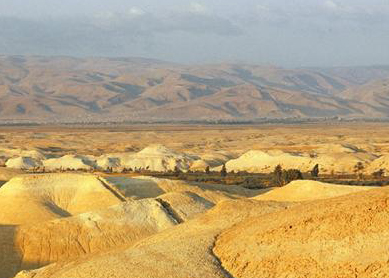
- Bruce Routledge

Where Was Moab?
- Brian C. Jones

Women of Moab
- Sarah Shectman

Immigrants and Foreigners in the Bible
- Daniel L. Smith-Christopher
Exodus 2:11-4:31 New International Version
Moses flees to midian.
11 One day, after Moses had grown up, he went out to where his own people ( A ) were and watched them at their hard labor. ( B ) He saw an Egyptian beating a Hebrew, one of his own people. 12 Looking this way and that and seeing no one, he killed the Egyptian and hid him in the sand. 13 The next day he went out and saw two Hebrews fighting. He asked the one in the wrong, “Why are you hitting your fellow Hebrew?” ( C )
14 The man said, “Who made you ruler and judge over us? ( D ) Are you thinking of killing me as you killed the Egyptian?” Then Moses was afraid and thought, “What I did must have become known.”
15 When Pharaoh heard of this, he tried to kill ( E ) Moses, but Moses fled ( F ) from Pharaoh and went to live in Midian, ( G ) where he sat down by a well. 16 Now a priest of Midian ( H ) had seven daughters, and they came to draw water ( I ) and fill the troughs ( J ) to water their father’s flock. 17 Some shepherds came along and drove them away, but Moses got up and came to their rescue ( K ) and watered their flock. ( L )
18 When the girls returned to Reuel ( M ) their father, he asked them, “Why have you returned so early today?”
19 They answered, “An Egyptian rescued us from the shepherds. He even drew water for us and watered the flock.”
20 “And where is he?” Reuel asked his daughters. “Why did you leave him? Invite him to have something to eat.” ( N )
21 Moses agreed to stay with the man, who gave his daughter Zipporah ( O ) to Moses in marriage. 22 Zipporah gave birth to a son, and Moses named him Gershom, [ a ] ( P ) saying, “I have become a foreigner ( Q ) in a foreign land.”
23 During that long period, ( R ) the king of Egypt died. ( S ) The Israelites groaned in their slavery ( T ) and cried out, and their cry ( U ) for help because of their slavery went up to God. 24 God heard their groaning and he remembered ( V ) his covenant ( W ) with Abraham, with Isaac and with Jacob. 25 So God looked on the Israelites and was concerned ( X ) about them.
Moses and the Burning Bush
3 Now Moses was tending the flock of Jethro ( Y ) his father-in-law, the priest of Midian, ( Z ) and he led the flock to the far side of the wilderness and came to Horeb, ( AA ) the mountain ( AB ) of God. 2 There the angel of the Lord ( AC ) appeared to him in flames of fire ( AD ) from within a bush. ( AE ) Moses saw that though the bush was on fire it did not burn up. 3 So Moses thought, “I will go over and see this strange sight—why the bush does not burn up.”
4 When the Lord saw that he had gone over to look, God called ( AF ) to him from within the bush, ( AG ) “Moses! Moses!”
And Moses said, “Here I am.” ( AH )
5 “Do not come any closer,” ( AI ) God said. “Take off your sandals, for the place where you are standing is holy ground.” ( AJ ) 6 Then he said, “I am the God of your father, [ b ] the God of Abraham, the God of Isaac and the God of Jacob.” ( AK ) At this, Moses hid ( AL ) his face, because he was afraid to look at God. ( AM )
7 The Lord said, “I have indeed seen ( AN ) the misery ( AO ) of my people in Egypt. I have heard them crying out because of their slave drivers, and I am concerned ( AP ) about their suffering. ( AQ ) 8 So I have come down ( AR ) to rescue them from the hand of the Egyptians and to bring them up out of that land into a good and spacious land, ( AS ) a land flowing with milk and honey ( AT ) —the home of the Canaanites, Hittites, Amorites, Perizzites, Hivites ( AU ) and Jebusites. ( AV ) 9 And now the cry of the Israelites has reached me, and I have seen the way the Egyptians are oppressing ( AW ) them. 10 So now, go. I am sending ( AX ) you to Pharaoh to bring my people the Israelites out of Egypt.” ( AY )
11 But Moses said to God, “Who am I ( AZ ) that I should go to Pharaoh and bring the Israelites out of Egypt?”
12 And God said, “I will be with you. ( BA ) And this will be the sign ( BB ) to you that it is I who have sent you: When you have brought the people out of Egypt, you [ c ] will worship God on this mountain. ( BC ) ”
13 Moses said to God, “Suppose I go to the Israelites and say to them, ‘The God of your fathers has sent me to you,’ and they ask me, ‘What is his name?’ ( BD ) Then what shall I tell them?”
14 God said to Moses, “ I am who I am . [ d ] This is what you are to say to the Israelites: ‘ I am ( BE ) has sent me to you.’”
15 God also said to Moses, “Say to the Israelites, ‘The Lord , [ e ] the God of your fathers ( BF ) —the God of Abraham, the God of Isaac and the God of Jacob ( BG ) —has sent me to you.’
“This is my name ( BH ) forever, the name you shall call me from generation to generation. ( BI )
16 “Go, assemble the elders ( BJ ) of Israel and say to them, ‘The Lord , the God of your fathers—the God of Abraham, Isaac and Jacob ( BK ) —appeared to me and said: I have watched over you and have seen ( BL ) what has been done to you in Egypt. 17 And I have promised to bring you up out of your misery in Egypt ( BM ) into the land of the Canaanites, Hittites, Amorites, Perizzites, Hivites and Jebusites—a land flowing with milk and honey.’ ( BN )
18 “The elders of Israel will listen ( BO ) to you. Then you and the elders are to go to the king of Egypt and say to him, ‘The Lord , the God of the Hebrews, ( BP ) has met ( BQ ) with us. Let us take a three-day journey ( BR ) into the wilderness to offer sacrifices ( BS ) to the Lord our God.’ 19 But I know that the king of Egypt will not let you go unless a mighty hand ( BT ) compels him. 20 So I will stretch out my hand ( BU ) and strike the Egyptians with all the wonders ( BV ) that I will perform among them. After that, he will let you go. ( BW )
21 “And I will make the Egyptians favorably disposed ( BX ) toward this people, so that when you leave you will not go empty-handed. ( BY ) 22 Every woman is to ask her neighbor and any woman living in her house for articles of silver ( BZ ) and gold ( CA ) and for clothing, which you will put on your sons and daughters. And so you will plunder ( CB ) the Egyptians.” ( CC )
Signs for Moses
4 Moses answered, “What if they do not believe me or listen ( CD ) to me and say, ‘The Lord did not appear to you’?”
2 Then the Lord said to him, “What is that in your hand?”
“A staff,” ( CE ) he replied.
3 The Lord said, “Throw it on the ground.”
Moses threw it on the ground and it became a snake, ( CF ) and he ran from it. 4 Then the Lord said to him, “Reach out your hand and take it by the tail.” So Moses reached out and took hold of the snake and it turned back into a staff in his hand. 5 “This,” said the Lord , “is so that they may believe ( CG ) that the Lord , the God of their fathers—the God of Abraham, the God of Isaac and the God of Jacob—has appeared to you.”
6 Then the Lord said, “Put your hand inside your cloak.” So Moses put his hand into his cloak, and when he took it out, the skin was leprous [ f ] —it had become as white as snow. ( CH )
7 “Now put it back into your cloak,” he said. So Moses put his hand back into his cloak, and when he took it out, it was restored, ( CI ) like the rest of his flesh.
8 Then the Lord said, “If they do not believe ( CJ ) you or pay attention to the first sign, ( CK ) they may believe the second. 9 But if they do not believe these two signs or listen to you, take some water from the Nile and pour it on the dry ground. The water you take from the river will become blood ( CL ) on the ground.”
10 Moses said to the Lord , “Pardon your servant, Lord. I have never been eloquent, neither in the past nor since you have spoken to your servant. I am slow of speech and tongue.” ( CM )
11 The Lord said to him, “Who gave human beings their mouths? Who makes them deaf or mute? ( CN ) Who gives them sight or makes them blind? ( CO ) Is it not I, the Lord ? 12 Now go; ( CP ) I will help you speak and will teach you what to say.” ( CQ )
13 But Moses said, “Pardon your servant, Lord. Please send someone else.” ( CR )
14 Then the Lord ’s anger burned ( CS ) against Moses and he said, “What about your brother, Aaron the Levite? I know he can speak well. He is already on his way to meet ( CT ) you, and he will be glad to see you. 15 You shall speak to him and put words in his mouth; ( CU ) I will help both of you speak and will teach you what to do. 16 He will speak to the people for you, and it will be as if he were your mouth ( CV ) and as if you were God to him. ( CW ) 17 But take this staff ( CX ) in your hand ( CY ) so you can perform the signs ( CZ ) with it.”
Moses Returns to Egypt
18 Then Moses went back to Jethro his father-in-law and said to him, “Let me return to my own people in Egypt to see if any of them are still alive.”
Jethro said, “Go, and I wish you well.”
19 Now the Lord had said to Moses in Midian, “Go back to Egypt, for all those who wanted to kill ( DA ) you are dead. ( DB ) ” 20 So Moses took his wife and sons, ( DC ) put them on a donkey and started back to Egypt. And he took the staff ( DD ) of God in his hand.
21 The Lord said to Moses, “When you return to Egypt, see that you perform before Pharaoh all the wonders ( DE ) I have given you the power to do. But I will harden his heart ( DF ) so that he will not let the people go. ( DG ) 22 Then say to Pharaoh, ‘This is what the Lord says: Israel is my firstborn son, ( DH ) 23 and I told you, “Let my son go, ( DI ) so he may worship ( DJ ) me.” But you refused to let him go; so I will kill your firstborn son.’” ( DK )
24 At a lodging place on the way, the Lord met Moses [ g ] and was about to kill ( DL ) him. 25 But Zipporah ( DM ) took a flint knife, cut off her son’s foreskin ( DN ) and touched Moses’ feet with it. [ h ] “Surely you are a bridegroom of blood to me,” she said. 26 So the Lord let him alone. (At that time she said “bridegroom of blood,” referring to circumcision.)
27 The Lord said to Aaron, “Go into the wilderness to meet Moses.” So he met Moses at the mountain ( DO ) of God and kissed ( DP ) him. 28 Then Moses told Aaron everything the Lord had sent him to say, and also about all the signs he had commanded him to perform.
29 Moses and Aaron brought together all the elders ( DQ ) of the Israelites, 30 and Aaron told them everything the Lord had said to Moses. He also performed the signs ( DR ) before the people, 31 and they believed. ( DS ) And when they heard that the Lord was concerned ( DT ) about them and had seen their misery, ( DU ) they bowed down and worshiped. ( DV )
- Exodus 2:22 Gershom sounds like the Hebrew for a foreigner there.
- Exodus 3:6 Masoretic Text; Samaritan Pentateuch (see Acts 7:32) fathers
- Exodus 3:12 The Hebrew is plural.
- Exodus 3:14 Or I will be what I will be
- Exodus 3:15 The Hebrew for Lord sounds like and may be related to the Hebrew for I am in verse 14.
- Exodus 4:6 The Hebrew word for leprous was used for various diseases affecting the skin.
- Exodus 4:24 Hebrew him
- Exodus 4:25 The meaning of the Hebrew for this clause is uncertain.
Cross references
- Exodus 2:11 : Ac 7:23; Heb 11:24-26
- Exodus 2:11 : S Ex 1:11
- Exodus 2:13 : Ac 7:26
- Exodus 2:14 : S Ge 13:8; Ac 7:27*
- Exodus 2:15 : Ex 4:19
- Exodus 2:15 : S Ge 31:21
- Exodus 2:15 : Heb 11:27
- Exodus 2:16 : Ex 3:1; 18:1
- Exodus 2:16 : S Ge 24:11
- Exodus 2:16 : S Ge 30:38
- Exodus 2:17 : 1Sa 30:8; Ps 31:2
- Exodus 2:17 : S Ge 29:10
- Exodus 2:18 : Ex 3:1; 4:18; 18:1, 5, 12; Nu 10:29
- Exodus 2:20 : Ge 18:2-5
- Exodus 2:21 : Ex 4:25; 18:2; Nu 12:1
- Exodus 2:22 : Jdg 18:30
- Exodus 2:22 : S Ge 23:4; Heb 11:13
- Exodus 2:23 : Ac 7:30
- Exodus 2:23 : Ex 4:19
- Exodus 2:23 : S Ex 1:14
- Exodus 2:23 : ver 24; Ex 3:7, 9; 6:5; Nu 20:15-16; Dt 26:7; Jdg 2:18; 1Sa 12:8; Ps 5:2; 18:6; 39:12; 81:7; 102:1; Jas 5:4
- Exodus 2:24 : S Ge 8:1
- Exodus 2:24 : S Ge 9:15; 15:15; 17:4; 22:16-18; 26:3; 28:13-15; Ex 32:13; 2Ki 13:23; Ps 105:10, 42; Jer 14:21
- Exodus 2:25 : Ex 3:7; 4:31; Lk 1:25
- Exodus 3:1 : S Ex 2:18; Jdg 1:16
- Exodus 3:1 : S Ex 2:16
- Exodus 3:1 : ver 12; Ex 17:6; 19:1-11, 5; 33:6; Dt 1:2, 6; 4:10; 5:2; 29:1; 1Ki 19:8; Mal 4:4
- Exodus 3:1 : Ex 4:27; 18:5; 24:13; Dt 4:11, 15
- Exodus 3:2 : S Ge 16:7; S Ex 12:23; S Ac 5:19
- Exodus 3:2 : Ex 19:18; 1Ki 19:12
- Exodus 3:2 : ver 4; Ex 2:2-6; Dt 33:16; Mk 12:26; Lk 20:37; Ac 7:30
- Exodus 3:4 : Ex 19:3; Lev 1:1
- Exodus 3:4 : Ex 4:5
- Exodus 3:4 : Ge 31:11; 1Sa 3:4; Isa 6:8
- Exodus 3:5 : Jer 30:21
- Exodus 3:5 : S Ge 28:17; Ac 7:33*
- Exodus 3:6 : S Ge 24:12; S Ex 4:5; Mt 22:32*; Mk 12:26*; Lk 20:37*; Ac 3:13; 7:32*
- Exodus 3:6 : 1Ki 19:13
- Exodus 3:6 : Ex 24:11; 33:20; Jdg 13:22; Job 13:11; 23:16; 30:15; Isa 6:5
- Exodus 3:7 : 1Sa 9:16
- Exodus 3:7 : ver 16; S Ge 16:11; 1Sa 1:11; Ne 9:9; Ps 106:44
- Exodus 3:7 : S Ex 2:25; Ac 7:34*
- Exodus 3:7 : S Ex 1:10
- Exodus 3:8 : S Ge 11:5; Ac 7:34*
- Exodus 3:8 : S Ge 12:7; S 15:14
- Exodus 3:8 : ver 17; Ex 13:5; 33:3; Lev 20:24; Nu 13:27; Dt 1:25; 6:3; 8:7-9; 11:9; 26:9; 27:3; Jos 5:6; Jer 11:5; 32:22; Eze 20:6
- Exodus 3:8 : Jos 11:3; Jdg 3:3; 2Sa 24:7
- Exodus 3:8 : S Ge 15:18-21; Ezr 9:1
- Exodus 3:9 : S Ex 1:14; S Nu 10:9
- Exodus 3:10 : Ex 4:12; Jos 24:5; 1Sa 12:8; Ps 105:26; Ac 7:34*
- Exodus 3:10 : Ex 6:13, 26; 12:41, 51; 20:2; Dt 4:20; 1Sa 12:6; 1Ki 8:16; Mic 6:4
- Exodus 3:11 : Ex 4:10; 6:12, 30; Jdg 6:15; 1Sa 9:21; 15:17; 18:18; 2Sa 7:18; 2Ch 2:6; Isa 6:5; Jer 1:6
- Exodus 3:12 : S Ge 26:3; S Ex 14:22; Ro 8:31
- Exodus 3:12 : Nu 26:10; Jos 2:12; Jdg 6:17; Ps 86:17; Isa 7:14; 8:18; 20:3; Jer 44:29
- Exodus 3:12 : S ver 1; Ac 7:7
- Exodus 3:13 : S Ge 32:29
- Exodus 3:14 : Ex 6:2-3; Jn 8:58; Heb 13:8; Rev 1:8; 4:8
- Exodus 3:15 : Ge 31:42; Da 2:23
- Exodus 3:15 : S Ge 24:12
- Exodus 3:15 : Ex 6:3, 7; 15:3; 23:21; 34:5-7; Lev 24:11; Dt 28:58; Ps 30:4; 83:18; 96:2; 97:12; 135:13; 145:21; Isa 42:8; Jer 16:21; 33:2; Hos 12:5
- Exodus 3:15 : Ps 45:17; 72:17; 102:12
- Exodus 3:16 : Ex 4:29; 17:5; Lev 4:15; Nu 11:16; 16:25; Dt 5:23; 19:12; Jdg 8:14; Ru 4:2; Pr 31:23; Eze 8:11
- Exodus 3:16 : S Ge 24:12
- Exodus 3:16 : Ex 4:31; 2Ki 19:16; 2Ch 6:20; Ps 33:18; 66:7
- Exodus 3:17 : S Ge 15:16; 46:4; Ex 6:6
- Exodus 3:17 : S ver 8
- Exodus 3:18 : Ex 4:1, 8, 31; 6:12, 30
- Exodus 3:18 : S Ge 14:13
- Exodus 3:18 : Nu 23:4, 16
- Exodus 3:18 : S Ge 30:36
- Exodus 3:18 : Ex 4:23; 5:1, 3; 6:11; 7:16; 8:20, 27; 9:13; 10:9, 26
- Exodus 3:19 : Ex 4:21; 6:6; 7:3; 10:1; 11:9; Dt 4:34; 2Ch 6:32
- Exodus 3:20 : Ex 6:1, 6; 7:4-5; 9:15; 13:3, 9, 14, 16; 15:6, 12; Dt 4:34, 37; 5:15; 7:8; 26:8; 2Ki 17:36; 2Ch 6:32; Ps 118:15-16; 136:12; Isa 41:10; 63:12; Jer 21:5; 51:25; Da 9:15
- Exodus 3:20 : Ex 4:21; 7:3; 11:9, 10; 15:11; 34:10; Nu 14:11; Dt 3:24; 4:34; 6:22; Ne 9:10; Ps 71:19; 72:18; 77:14; 78:43; 86:10; 105:27; 106:22; 135:9; 136:4; Jer 32:20; Mic 7:15; Ac 7:36
- Exodus 3:20 : Ex 11:1; 12:31-33
- Exodus 3:21 : S Ge 39:21
- Exodus 3:21 : Ex 11:2; 2Ch 30:9; Ne 1:11; Ps 105:37; 106:46; Jer 42:12
- Exodus 3:22 : Job 27:16-17
- Exodus 3:22 : Ex 11:2; 12:35; Ezr 1:4, 6; 7:16; Ps 105:37
- Exodus 3:22 : S Ge 15:14; Eze 39:10
- Exodus 3:22 : Eze 29:10
- Exodus 4:1 : S Ex 3:18
- Exodus 4:2 : ver 17, 20; Ge 38:18; Ex 7:19; 8:5, 16; 14:16, 21; 17:5-6, 9; Nu 17:2; 20:8; Jos 8:18; Jdg 6:21; 1Sa 14:27; 2Ki 4:29
- Exodus 4:3 : Ex 7:8-12, 15
- Exodus 4:5 : ver 31; S Ex 3:6; 14:31; 19:9
- Exodus 4:6 : Lev 13:2, 11; Nu 12:10; Dt 24:9; 2Ki 5:1, 27; 2Ch 26:21
- Exodus 4:7 : 2Ki 5:14; Mt 8:3; Lk 17:12-14
- Exodus 4:8 : S Ex 3:18
- Exodus 4:8 : ver 30; Jdg 6:17; 1Ki 13:3; Isa 7:14; Jer 44:29
- Exodus 4:9 : Ex 7:17-21
- Exodus 4:10 : S Ex 3:11
- Exodus 4:11 : Lk 1:20, 64
- Exodus 4:11 : Ps 94:9; 146:8; Mt 11:5; Jn 10:21
- Exodus 4:12 : S Ex 3:10
- Exodus 4:12 : ver 15-16; Nu 23:5; Dt 18:15, 18; Isa 50:4; 51:16; Jer 1:9; Mt 10:19-20; Mk 13:11; S Lk 12:12
- Exodus 4:13 : Jnh 1:1-3
- Exodus 4:14 : Nu 11:1, 10, 33; 12:9; 16:15; 22:22; 24:10; 32:13; Dt 7:25; Jos 7:1; Job 17:8
- Exodus 4:14 : ver 27; 1Sa 10:2-5
- Exodus 4:15 : ver 30; Nu 23:5, 12, 16; Dt 18:18; Jos 1:8; Isa 51:16; 59:21; Jer 1:9; 31:33
- Exodus 4:16 : Ex 7:1-2; Jer 15:19; 36:6
- Exodus 4:16 : Nu 33:1; Ps 77:20; 105:26; Mic 6:4
- Exodus 4:17 : S ver 2
- Exodus 4:17 : ver 20; Ex 17:9
- Exodus 4:17 : Ex 7:9-21; 8:5, 16; 9:22; 10:12-15, 21-23; 14:15-18, 26; Nu 14:11; Dt 4:34; Ps 74:9; 78:43; 105:27
- Exodus 4:19 : Ex 2:15
- Exodus 4:19 : Ex 2:23; Mt 2:20
- Exodus 4:20 : Ex 2:22; 18:3; Ac 7:29
- Exodus 4:20 : S ver 2
- Exodus 4:21 : S Ex 3:19, 20
- Exodus 4:21 : Ex 7:3, 13; 8:15; 9:12, 35; 10:1, 20, 27; 11:10; 14:4, 8; Dt 2:30; Jos 11:20; 1Sa 6:6; Ps 105:25; Isa 6:10; 63:17; Jn 12:40; Ro 9:18
- Exodus 4:21 : Ex 8:32; 9:17
- Exodus 4:22 : S Ge 10:15; Dt 32:6; Isa 9:6; 63:16; 64:8; Jer 3:19; 31:9; Hos 11:1; Mal 2:10; Ro 9:4; 2Co 6:18
- Exodus 4:23 : Ex 5:1; 7:16
- Exodus 4:23 : S Ex 3:18
- Exodus 4:23 : Ge 49:3; Ex 11:5; 12:12, 29; Nu 8:17; 33:4; Ps 78:51; 105:36; 135:8; 136:10
- Exodus 4:24 : Nu 22:22
- Exodus 4:25 : S Ex 2:21
- Exodus 4:25 : Ge 17:14; Jos 5:2, 3
- Exodus 4:27 : S Ex 3:1
- Exodus 4:27 : S Ge 27:27; S 29:13
- Exodus 4:29 : S Ex 3:16
- Exodus 4:30 : S ver 8
- Exodus 4:31 : S Ex 3:18
- Exodus 4:31 : S Ex 2:25
- Exodus 4:31 : S Ge 16:11
- Exodus 4:31 : S Ge 24:26
Exodus 2:11-4:31 King James Version
11 And it came to pass in those days, when Moses was grown, that he went out unto his brethren, and looked on their burdens: and he spied an Egyptian smiting an Hebrew, one of his brethren.
12 And he looked this way and that way, and when he saw that there was no man, he slew the Egyptian, and hid him in the sand.
13 And when he went out the second day, behold, two men of the Hebrews strove together: and he said to him that did the wrong, Wherefore smitest thou thy fellow?
14 And he said, Who made thee a prince and a judge over us? intendest thou to kill me, as thou killedst the Egyptian? And Moses feared, and said, Surely this thing is known.
15 Now when Pharaoh heard this thing, he sought to slay Moses. But Moses fled from the face of Pharaoh, and dwelt in the land of Midian: and he sat down by a well.
16 Now the priest of Midian had seven daughters: and they came and drew water, and filled the troughs to water their father's flock.
17 And the shepherds came and drove them away: but Moses stood up and helped them, and watered their flock.
18 And when they came to Reuel their father, he said, How is it that ye are come so soon to day?
19 And they said, An Egyptian delivered us out of the hand of the shepherds, and also drew water enough for us, and watered the flock.
20 And he said unto his daughters, And where is he? why is it that ye have left the man? call him, that he may eat bread.
21 And Moses was content to dwell with the man: and he gave Moses Zipporah his daughter.
22 And she bare him a son, and he called his name Gershom: for he said, I have been a stranger in a strange land.
23 And it came to pass in process of time, that the king of Egypt died: and the children of Israel sighed by reason of the bondage, and they cried, and their cry came up unto God by reason of the bondage.
24 And God heard their groaning, and God remembered his covenant with Abraham, with Isaac, and with Jacob.
25 And God looked upon the children of Israel, and God had respect unto them.
3 Now Moses kept the flock of Jethro his father in law, the priest of Midian: and he led the flock to the backside of the desert, and came to the mountain of God, even to Horeb.
2 And the angel of the Lord appeared unto him in a flame of fire out of the midst of a bush: and he looked, and, behold, the bush burned with fire, and the bush was not consumed.
3 And Moses said, I will now turn aside, and see this great sight, why the bush is not burnt.
4 And when the Lord saw that he turned aside to see, God called unto him out of the midst of the bush, and said, Moses, Moses. And he said, Here am I.
5 And he said, Draw not nigh hither: put off thy shoes from off thy feet, for the place whereon thou standest is holy ground.
6 Moreover he said, I am the God of thy father, the God of Abraham, the God of Isaac, and the God of Jacob. And Moses hid his face; for he was afraid to look upon God.
7 And the Lord said, I have surely seen the affliction of my people which are in Egypt, and have heard their cry by reason of their taskmasters; for I know their sorrows;
8 And I am come down to deliver them out of the hand of the Egyptians, and to bring them up out of that land unto a good land and a large, unto a land flowing with milk and honey; unto the place of the Canaanites, and the Hittites, and the Amorites, and the Perizzites, and the Hivites, and the Jebusites.
9 Now therefore, behold, the cry of the children of Israel is come unto me: and I have also seen the oppression wherewith the Egyptians oppress them.
10 Come now therefore, and I will send thee unto Pharaoh, that thou mayest bring forth my people the children of Israel out of Egypt.
11 And Moses said unto God, Who am I, that I should go unto Pharaoh, and that I should bring forth the children of Israel out of Egypt?
12 And he said, Certainly I will be with thee; and this shall be a token unto thee, that I have sent thee: When thou hast brought forth the people out of Egypt, ye shall serve God upon this mountain.
13 And Moses said unto God, Behold, when I come unto the children of Israel, and shall say unto them, The God of your fathers hath sent me unto you; and they shall say to me, What is his name? what shall I say unto them?
14 And God said unto Moses, I Am That I Am : and he said, Thus shalt thou say unto the children of Israel, I Am hath sent me unto you.
15 And God said moreover unto Moses, Thus shalt thou say unto the children of Israel, the Lord God of your fathers, the God of Abraham, the God of Isaac, and the God of Jacob, hath sent me unto you: this is my name for ever, and this is my memorial unto all generations.
16 Go, and gather the elders of Israel together, and say unto them, The Lord God of your fathers, the God of Abraham, of Isaac, and of Jacob, appeared unto me, saying, I have surely visited you, and seen that which is done to you in Egypt:
17 And I have said, I will bring you up out of the affliction of Egypt unto the land of the Canaanites, and the Hittites, and the Amorites, and the Perizzites, and the Hivites, and the Jebusites, unto a land flowing with milk and honey.
18 And they shall hearken to thy voice: and thou shalt come, thou and the elders of Israel, unto the king of Egypt, and ye shall say unto him, The Lord God of the Hebrews hath met with us: and now let us go, we beseech thee, three days' journey into the wilderness, that we may sacrifice to the Lord our God.
19 And I am sure that the king of Egypt will not let you go, no, not by a mighty hand.
20 And I will stretch out my hand, and smite Egypt with all my wonders which I will do in the midst thereof: and after that he will let you go.
21 And I will give this people favour in the sight of the Egyptians: and it shall come to pass, that, when ye go, ye shall not go empty.
22 But every woman shall borrow of her neighbour, and of her that sojourneth in her house, jewels of silver, and jewels of gold, and raiment: and ye shall put them upon your sons, and upon your daughters; and ye shall spoil the Egyptians.
4 And Moses answered and said, But, behold, they will not believe me, nor hearken unto my voice: for they will say, The Lord hath not appeared unto thee.
2 And the Lord said unto him, What is that in thine hand? And he said, A rod.
3 And he said, Cast it on the ground. And he cast it on the ground, and it became a serpent; and Moses fled from before it.
4 And the Lord said unto Moses, Put forth thine hand, and take it by the tail. And he put forth his hand, and caught it, and it became a rod in his hand:
5 That they may believe that the Lord God of their fathers, the God of Abraham, the God of Isaac, and the God of Jacob, hath appeared unto thee.
6 And the Lord said furthermore unto him, Put now thine hand into thy bosom. And he put his hand into his bosom: and when he took it out, behold, his hand was leprous as snow.
7 And he said, Put thine hand into thy bosom again. And he put his hand into his bosom again; and plucked it out of his bosom, and, behold, it was turned again as his other flesh.
8 And it shall come to pass, if they will not believe thee, neither hearken to the voice of the first sign, that they will believe the voice of the latter sign.
9 And it shall come to pass, if they will not believe also these two signs, neither hearken unto thy voice, that thou shalt take of the water of the river, and pour it upon the dry land: and the water which thou takest out of the river shall become blood upon the dry land.
10 And Moses said unto the Lord , O my Lord , I am not eloquent, neither heretofore, nor since thou hast spoken unto thy servant: but I am slow of speech, and of a slow tongue.
11 And the Lord said unto him, Who hath made man's mouth? or who maketh the dumb, or deaf, or the seeing, or the blind? have not I the Lord ?
12 Now therefore go, and I will be with thy mouth, and teach thee what thou shalt say.
13 And he said, O my Lord , send, I pray thee, by the hand of him whom thou wilt send.
14 And the anger of the Lord was kindled against Moses, and he said, Is not Aaron the Levite thy brother? I know that he can speak well. And also, behold, he cometh forth to meet thee: and when he seeth thee, he will be glad in his heart.
15 And thou shalt speak unto him, and put words in his mouth: and I will be with thy mouth, and with his mouth, and will teach you what ye shall do.
16 And he shall be thy spokesman unto the people: and he shall be, even he shall be to thee instead of a mouth, and thou shalt be to him instead of God.
17 And thou shalt take this rod in thine hand, wherewith thou shalt do signs.
18 And Moses went and returned to Jethro his father in law, and said unto him, Let me go, I pray thee, and return unto my brethren which are in Egypt, and see whether they be yet alive. And Jethro said to Moses, Go in peace.
19 And the Lord said unto Moses in Midian, Go, return into Egypt: for all the men are dead which sought thy life.
20 And Moses took his wife and his sons, and set them upon an ass, and he returned to the land of Egypt: and Moses took the rod of God in his hand.
21 And the Lord said unto Moses, When thou goest to return into Egypt, see that thou do all those wonders before Pharaoh, which I have put in thine hand: but I will harden his heart, that he shall not let the people go.
22 And thou shalt say unto Pharaoh, Thus saith the Lord , Israel is my son, even my firstborn:
23 And I say unto thee, Let my son go, that he may serve me: and if thou refuse to let him go, behold, I will slay thy son, even thy firstborn.
24 And it came to pass by the way in the inn, that the Lord met him, and sought to kill him.
25 Then Zipporah took a sharp stone, and cut off the foreskin of her son, and cast it at his feet, and said, Surely a bloody husband art thou to me.
26 So he let him go: then she said, A bloody husband thou art, because of the circumcision.
27 And the Lord said to Aaron, Go into the wilderness to meet Moses. And he went, and met him in the mount of God, and kissed him.
28 And Moses told Aaron all the words of the Lord who had sent him, and all the signs which he had commanded him.
29 And Moses and Aaron went and gathered together all the elders of the children of Israel:
30 And Aaron spake all the words which the Lord had spoken unto Moses, and did the signs in the sight of the people.
31 And the people believed: and when they heard that the Lord had visited the children of Israel, and that he had looked upon their affliction, then they bowed their heads and worshipped.
Holy Bible, New International Version®, NIV® Copyright ©1973, 1978, 1984, 2011 by Biblica, Inc.® Used by permission. All rights reserved worldwide.
NIV Reverse Interlinear Bible: English to Hebrew and English to Greek. Copyright © 2019 by Zondervan.

More on the NIV
- Unleash God's Word!
Public Domain
Moscow - Interactive map
Information about the map.
Check out the main monuments, museums, squares, churches and attractions in our map of Moscow. Click on each icon to see what it is.
To help you find your way once you get to your destination, the map you print out will have numbers on the various icons that correspond to a list with the most interesting tourist attractions. This way, you’ll be able to see where each attraction is.
Icons on the Moscow interactive map
The map is very easy to use:
- Check out information about the destination: click on the color indicators.
- Move across the map: shift your mouse across the map.
- Zoom in: double click on the left-hand side of the mouse on the map or move the scroll wheel upwards.
- Zoom out: double click on the right-hand side of the mouse on the map or move the scroll wheel downwards.
You may also be interested in

Where to eat
Vodka, caviar, borscht... the list of Russian delicacies goes on! Discover where, when and what to eat during your trip to Moscow.
General Information
Learn everything you need to know for your trip to Moscow, from visa requirements and currency to language tips and which plugs to bring! We'll try and answer all of your most frequently asked questions.

IMAGES
VIDEO
COMMENTS
This map shows the Exodus of the Israelites from Egypt to the Promised Land under the leadership of Moses. The Nile Delta was a triangular area of marshland about 150 miles from north to south, from Memphis to the Mediterranean, and about 150 - 200 miles wide. Upper Egypt was a bit further south from Lower Egypt, starting at Memphis (bottom of ...
Here's a closer look at the journey from Egypt to Canaan. Egypt: The Exodus began in Egypt, where the Israelites had been living in slavery for over 400 years. According to the Bible, Moses led the Israelites out of Egypt and across the Red Sea, which God miraculously parted to allow them to pass. Sinai Peninsula: After crossing the Red Sea ...
The story of the 40 year wilderness journey in the Old Testament, where Moses led the children of Israel to the Promised Land, has always been a popular one: The traditional movie poster from 1956 is a great example. ... When I started traveling, I was amazed by what I learned about ancient Israel. Map Of Moses In The Wilderness Moving from ...
Maps of the Exodus and Canaan to the times of the judges. Contributed by The Bible Journey. Read terms of download. View slideshow Download image set Story planner. ... We are a team of Christians creating a visual journey through the Bible as a resource for teaching all ages - available for free download by anyone, anywhere at any time. ...
Exodus map of Moses and Hebrews leaving Egypt. The map shows a possible route Moses took when he led the Hebrews to freedom. Many Bibles say Moses and the Hebrews crossed the "Red Sea.". But the Hebrew words are yam suph, "sea reeds.". Later in the story, Moses and the Hebrew refugees will escape through a path God makes in this body of ...
This is a map of the Israelite journey out of the wilderness and into the Promised Land. ... The Life of Moses: A Chronology. Chapter 2 Activity: A Salvation History Time Line. ... Map of the Prophets to Israel and Judah. Map of the Journeys of Abraham, Jacob and Joseph - The Founders. Map of the Exile to Babylon and Back to Jerusalem. Company ...
Beginning the Journey (for new Christians). en Español. Old Testament Abraham Jacob Moses Joshua Gideon David, Life of Elijah Psalms Solomon Songs of Ascent (Ps 120-135) Isaiah Advent/Messianic Scriptures Daniel Rebuild & Renew: Post-Exilic Books. Gospels Christmas Incarnation (Mt, Lk) Sermon on the Mount (Mt 5-7) Mark Luke's Gospel John's Gospel
Moses' leadership was instrumental in guiding the Israelites. Bible maps help us visualize his interactions with God on Mount Sinai and the various locations where he delivered crucial teachings and instructions. This visual journey enhances our understanding of Moses' role as both a spiritual leader and a practical guide for the nation.
This map shows the 42 camp sites during the Wilderness Journey when the people of God left Egypt—in what is called the Exodus—and traveled for 40 years around the wilderness before settling into Canaan, the Promised Land. Each of the 42 camp sites is pinpointed on the map as well as the major sites where important events happened.
Moses' Journey according to Cranach. Scenes from Exodus depicted on the Holy Land map.
This map shows the 42 camp sites during the Wilderness Journey when the people of God left Egypt—in what is called the Exodus—and traveled for 40 years around the wilderness before settling into Canaan, the Promised Land. Each of the 42 camp sites is pinpointed on the map as well as the major sites where important events happened.
Moses was a Hebrew teacher and leader considered the most important prophet in Judaism and one of the most important prophets in Christianity, Islam, the Baháʼí Faith, and other Abrahamic religions.According to both the Bible and the Quran, Moses was the leader of the Israelites and lawgiver to whom the prophetic authorship of the Torah (the first five books of the Bible) is attributed.
The First Miracle. The book of Exodus offers us, for the first time since shortly after his birth, the age of Moses when an important event happens in his life. And Moses was eighty years old, and Aaron was eighty-three years old, when they spoke to Pharaoh (Exodus 7:7, HBFV). The event, in this case, is the patriarch's return to confront ...
He accomplishes this goal through ten Old Testament plagues performed by Moses and Aaron (Exodus 2 - 15). The Israelites, after leaving Egypt in 1445, journey to Mount Sinai where they receive the Ten Commandments (and other laws) directly from God (Exodus 20 - 23, etc.). Entering the Promised Land #8 - 1405 B.C.
Stages of the Journey - Numbers 33. 1 These are the journeys of the children of Israel, who went out of the land of Egypt by their armies under the hand of Moses and Aaron. 2 Now Moses wrote down the starting points of their journeys at the command of the Lord.And these are their journeys according to their starting points: 3 They departed from Rameses in the first month, on the fifteenth day ...
Exodus 2. . Despite being born into an era of peril and uncertainty, Moses' life, guided by divine providence, becomes an inspiring testament of courage, defiance, and commitment to justice. His journey from the reeds of the Nile to the land of Midian sets the stage for his calling as a deliverer, reminding us that even in the darkest moments ...
Map of Israel During the Time of Joshua The land of Israel during the time of Joshua. The twelve tribes are listed separately. Joshua proved to be an excellent general by his victory over the Amalekites (Exodus 17:9, 13). After Moses' death, according to the Book of Joshua, Joshua led the Israelites in their conquest of the highlands of central Palestine and during the distribution of the land ...
Exodus 15:22-17:16. King James Version. 22 So Moses brought Israel from the Red sea, and they went out into the wilderness of Shur; and they went three days in the wilderness, and found no water. 23 And when they came to Marah, they could not drink of the waters of Marah, for they were bitter: therefore the name of it was called Marah.
The area shaded in pink is the territory known as Moab, located on the east side of the Dead Sea, across from the wilderness of Judah. A flat and arid plane extends east from the banks of the Dead Sea before ascending sharply some 4,000 feet to the plain above. The upper plain is a more fertile stretch of land that extends about 15 miles from ...
Footnotes. Exodus 2:22 Gershom sounds like the Hebrew for a foreigner there.; Exodus 3:6 Masoretic Text; Samaritan Pentateuch (see Acts 7:32) fathers; Exodus 3:12 The Hebrew is plural.; Exodus 3:14 Or I will be what I will be; Exodus 3:15 The Hebrew for Lord sounds like and may be related to the Hebrew for I am in verse 14.; Exodus 4:6 The Hebrew word for leprous was used for various diseases ...
Icons on the Moscow interactive map. The map is very easy to use: Check out information about the destination: click on the color indicators. Move across the map: shift your mouse across the map. Zoom in: double click on the left-hand side of the mouse on the map or move the scroll wheel upwards. Zoom out: double click on the right-hand side of ...
The Mossoviet (Russian: Моссовет), an abbreviation of Moscow Soviet (Московский Совет, Moskovskij Sovet ), was established following the February Revolution 8-16 March 1917 [ O.S. 23 Feb. - 3 Mar. ]. Initially it was a parallel, shadow city administration of Moscow, Russia run by left-wing parties. Following the ...
Get step-by-step walking or driving directions to Moses Lake, WA.Avoid traffic with optimized routes.